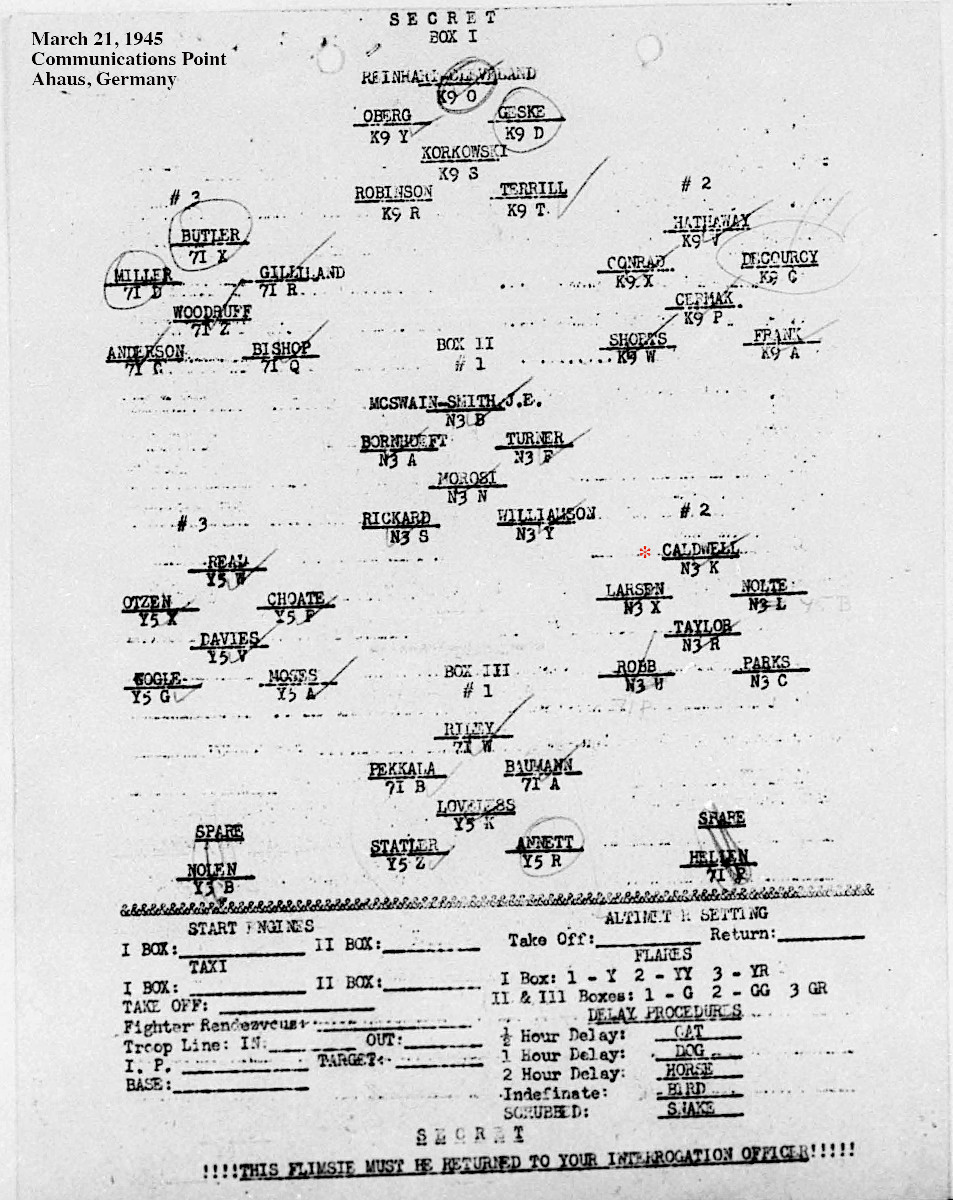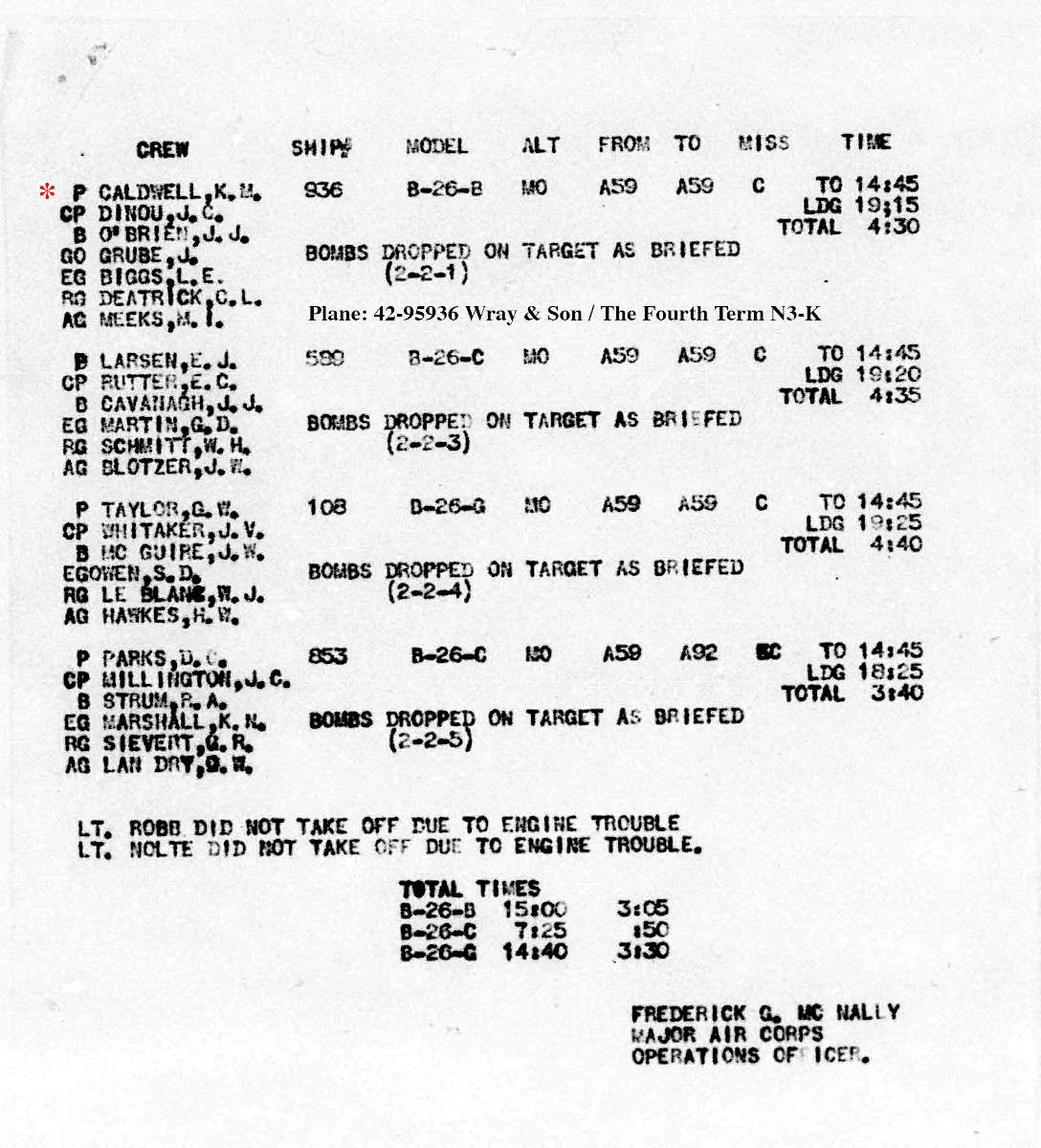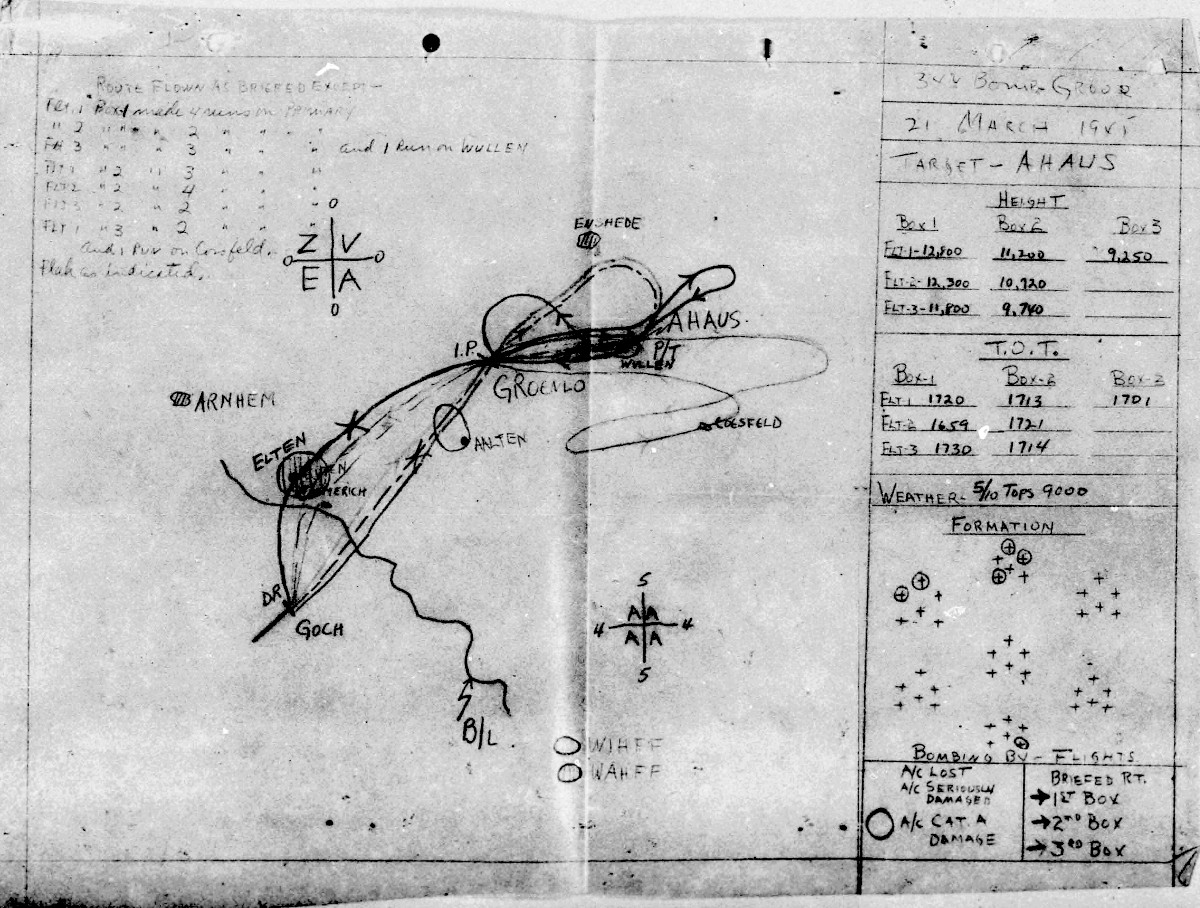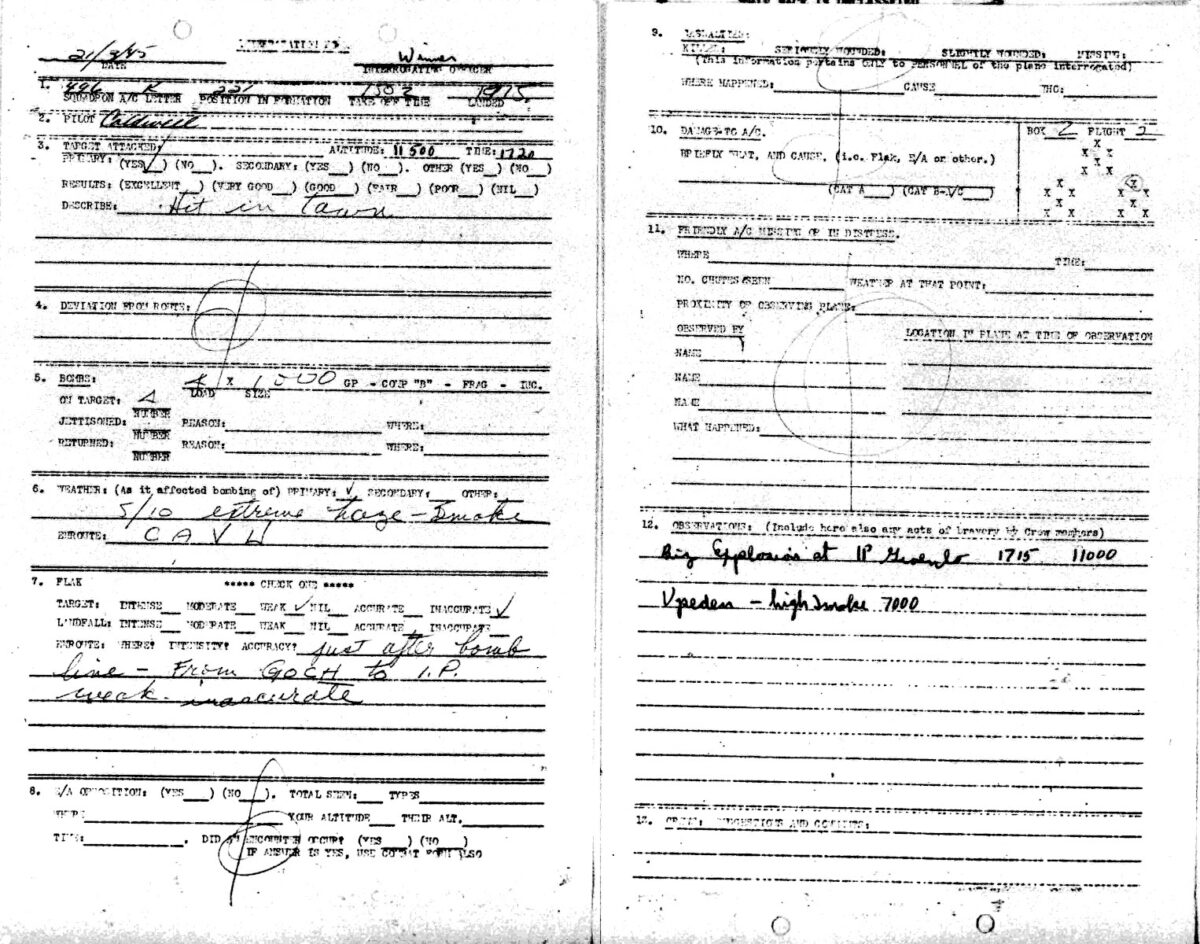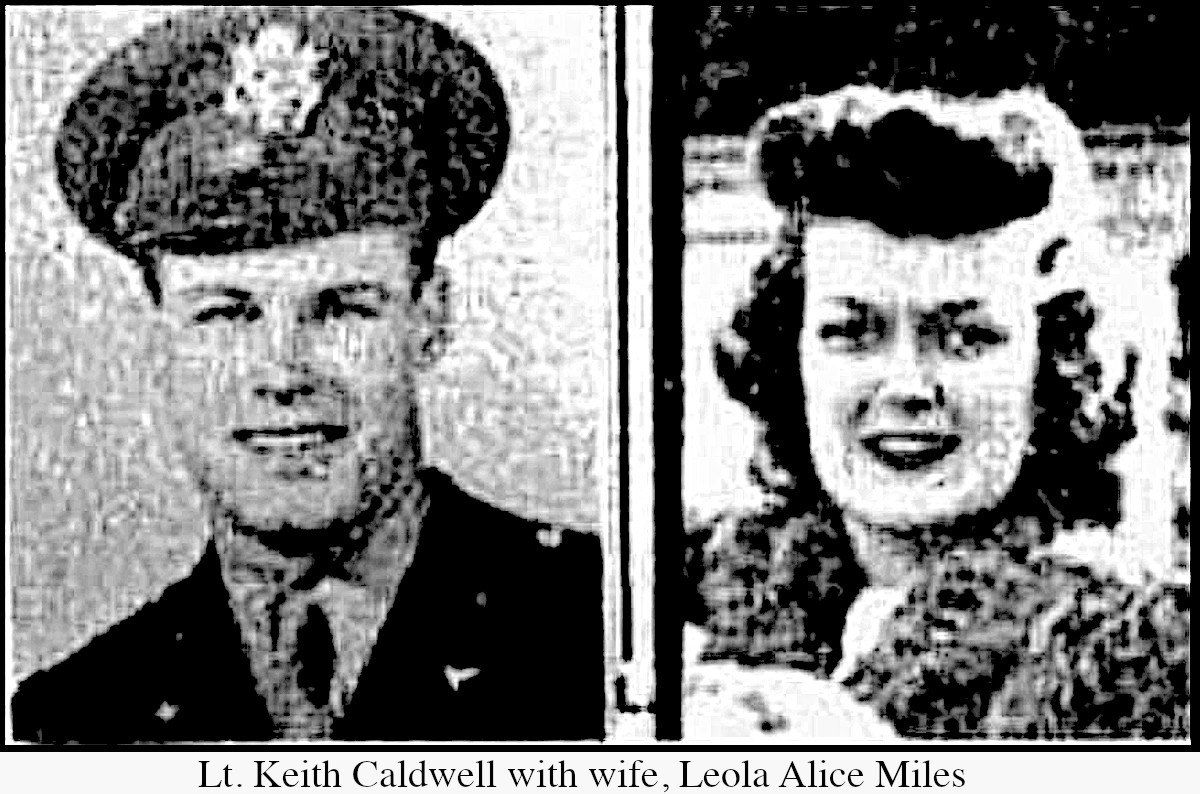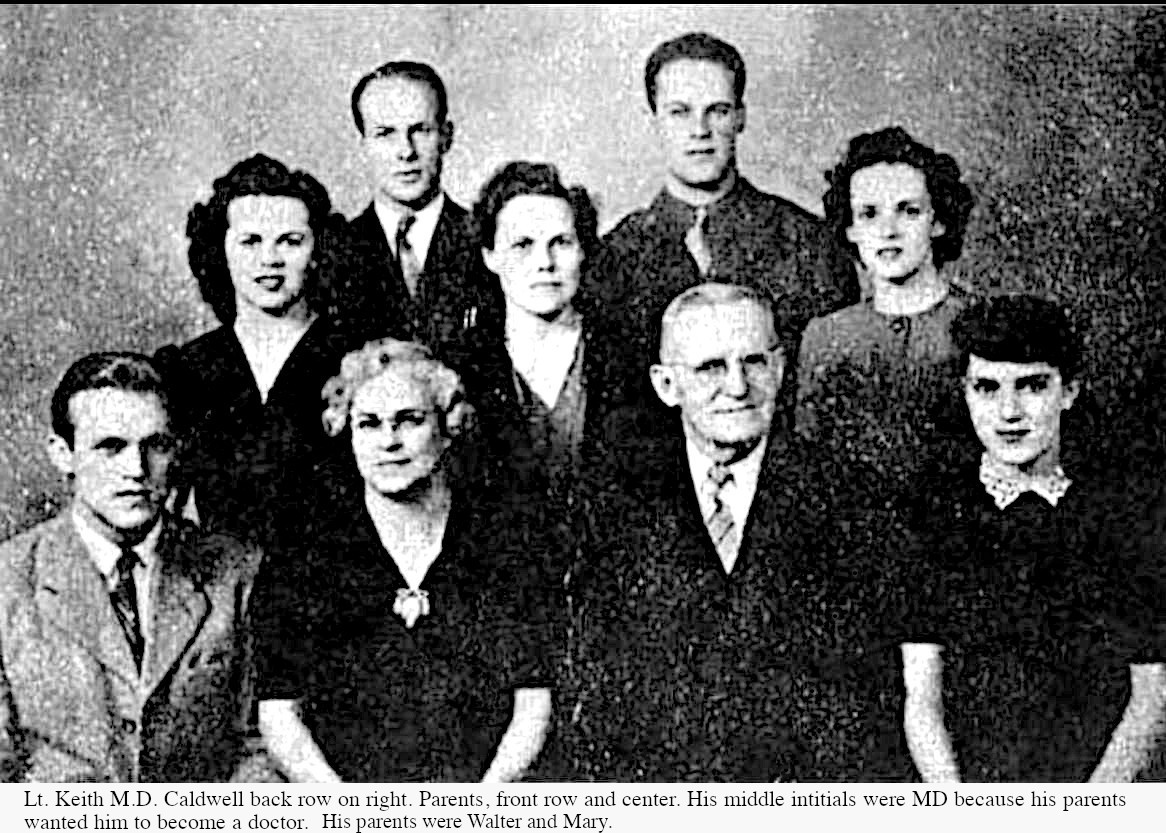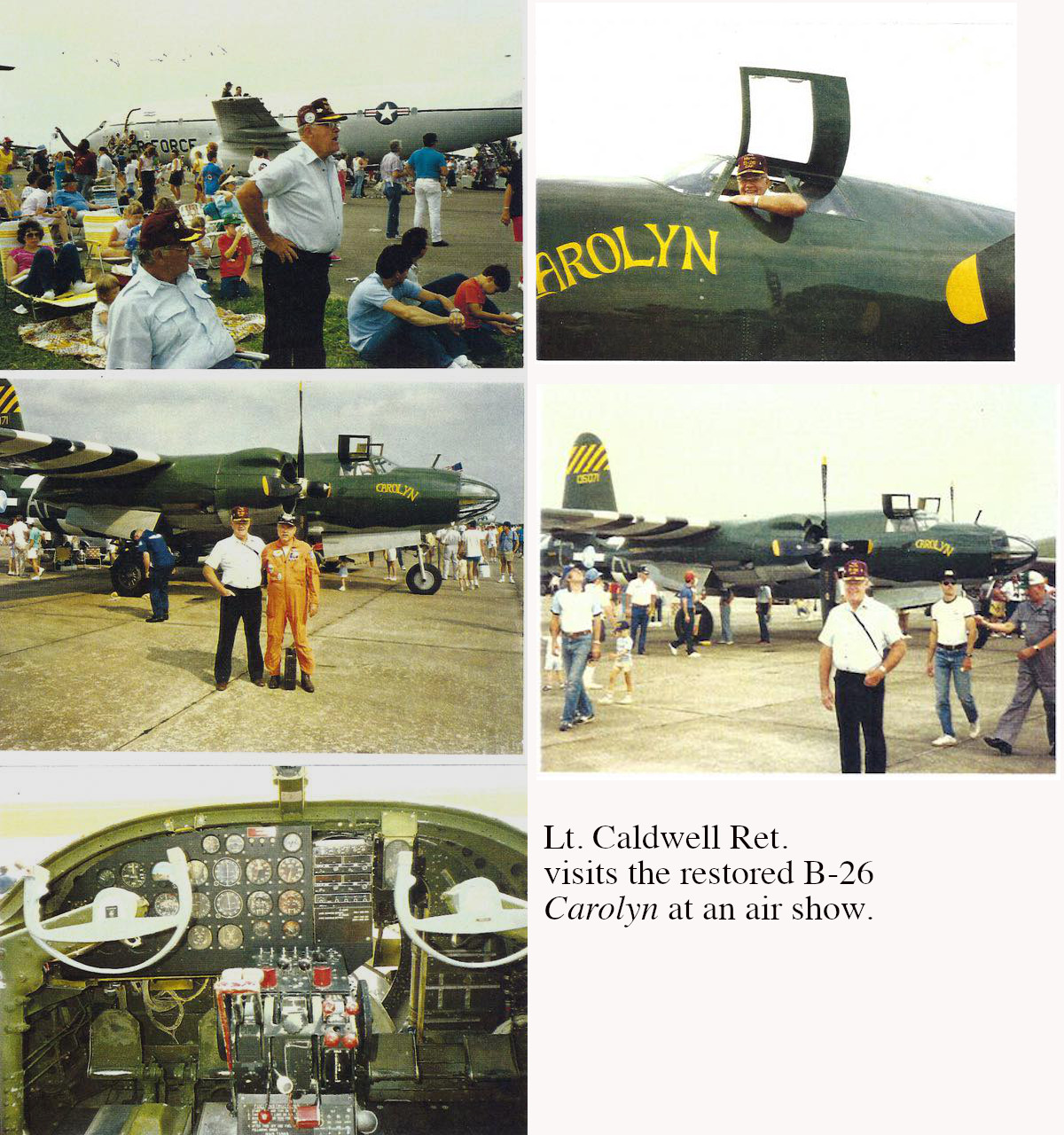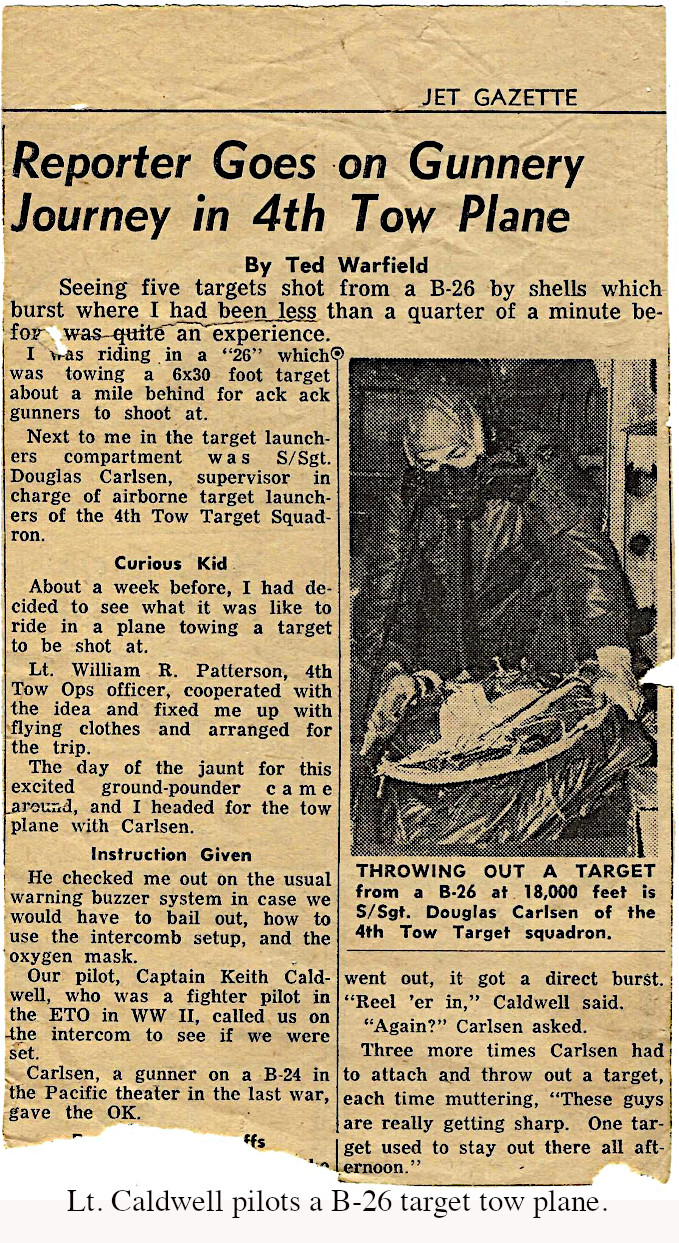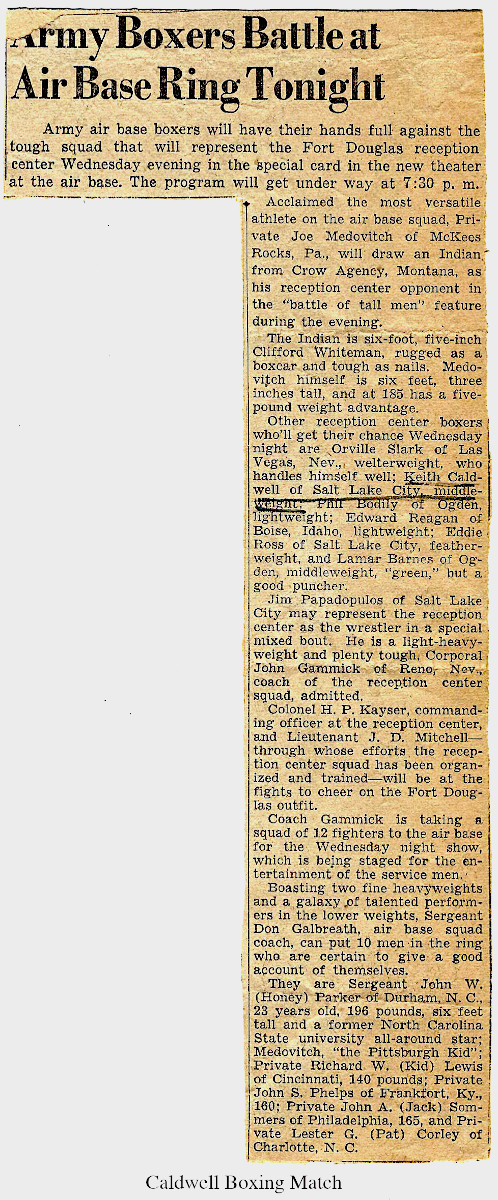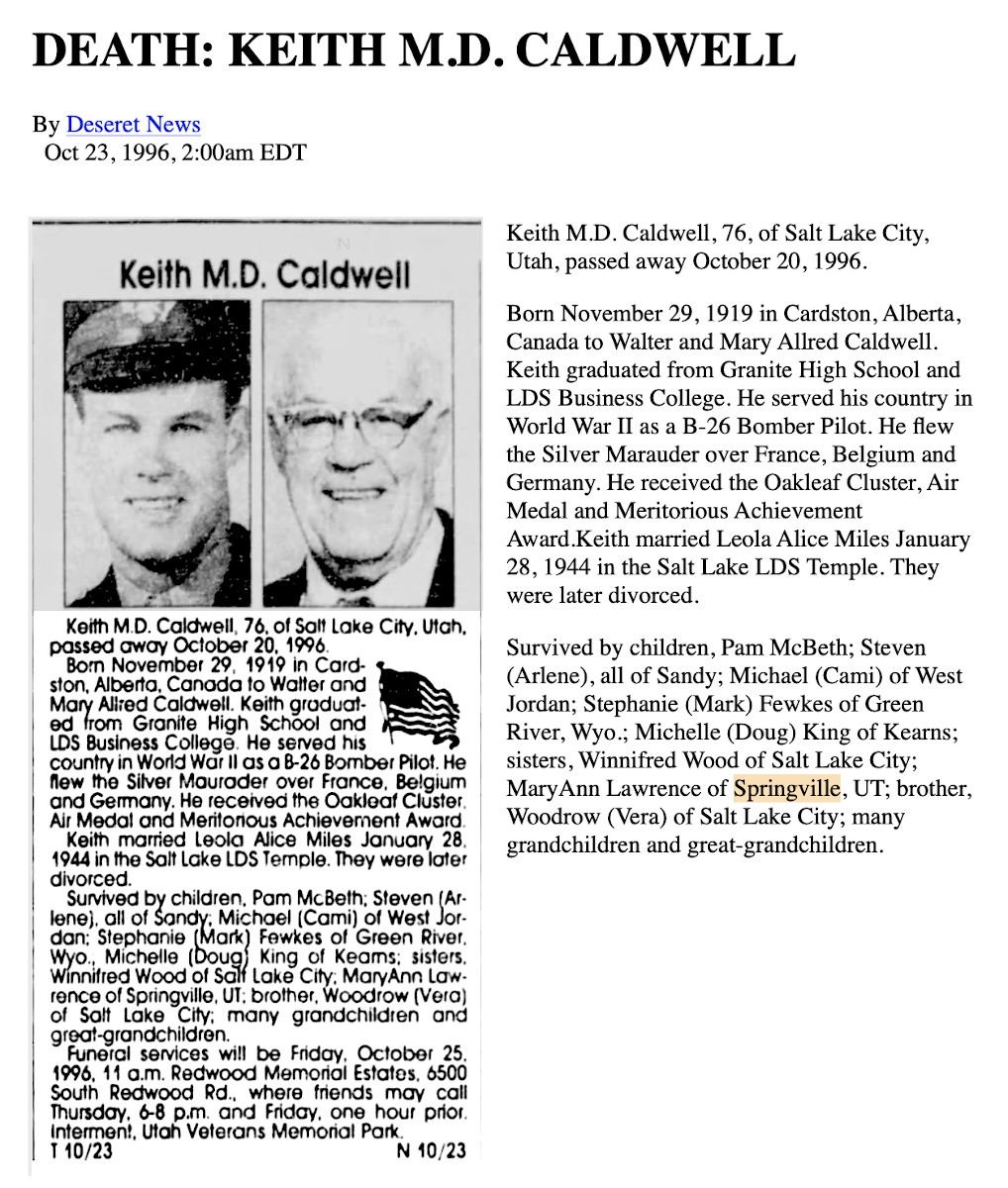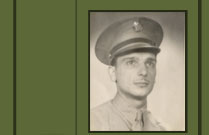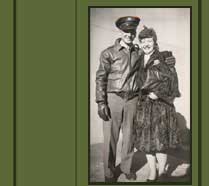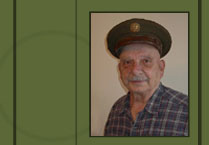Captain Keith M. Caldwell
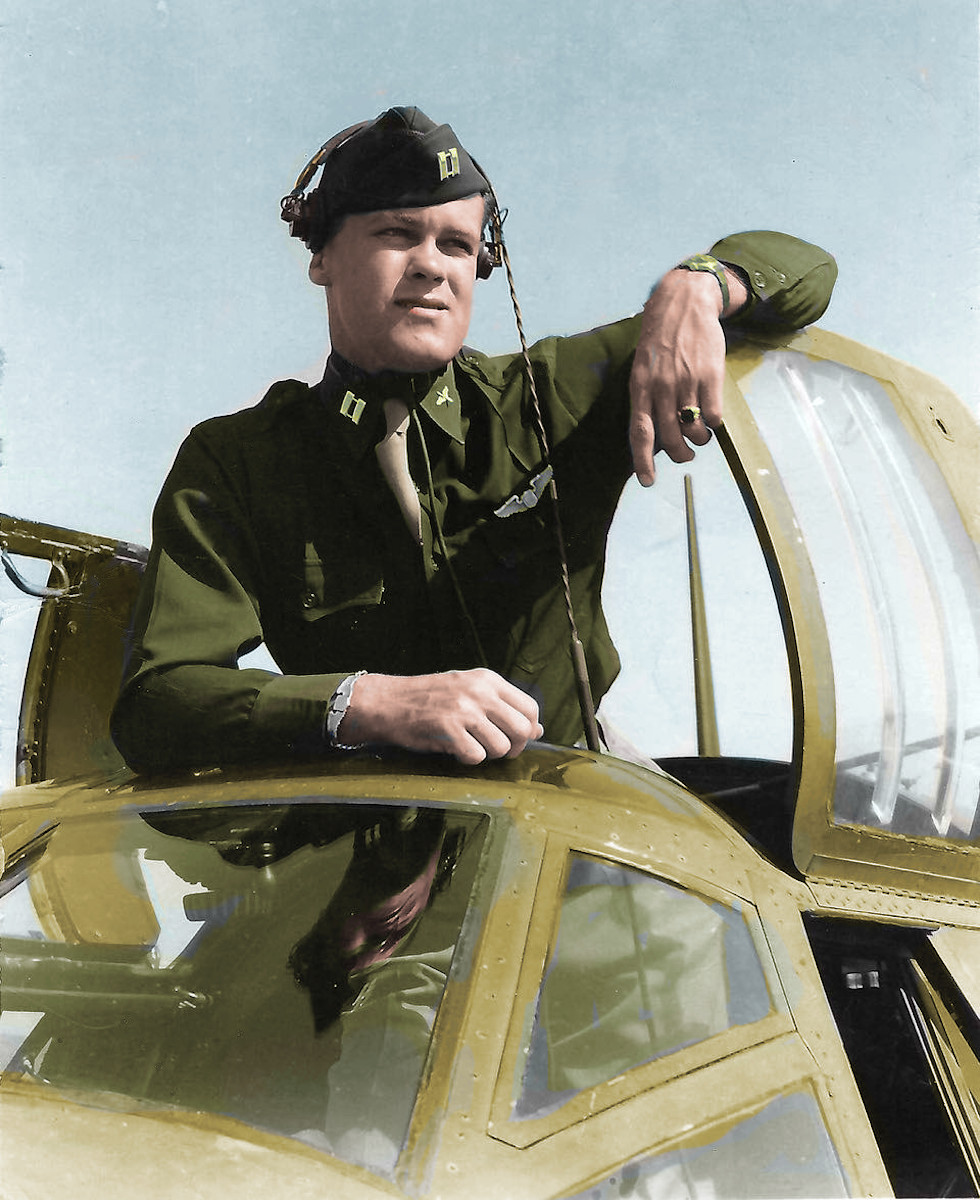
Co-Pilot Dinou said of Keith Caldwell, “The only things that sustained me in my rather lengthy stay at Barksdale, were I was assigned to the crew of Keith Caldwell, a marvelous pilot and an even more wonderful person. Keith saved my life on several occasions. He was a Mormon Lay-Bishop from Salt Lake City. His idea of a big time was going to museums in London or attending the Paris Opera; ‘Boris Gudenov’ comes to mind. He never drank anything stronger than Coca-Cola, not even during his months of combat.”
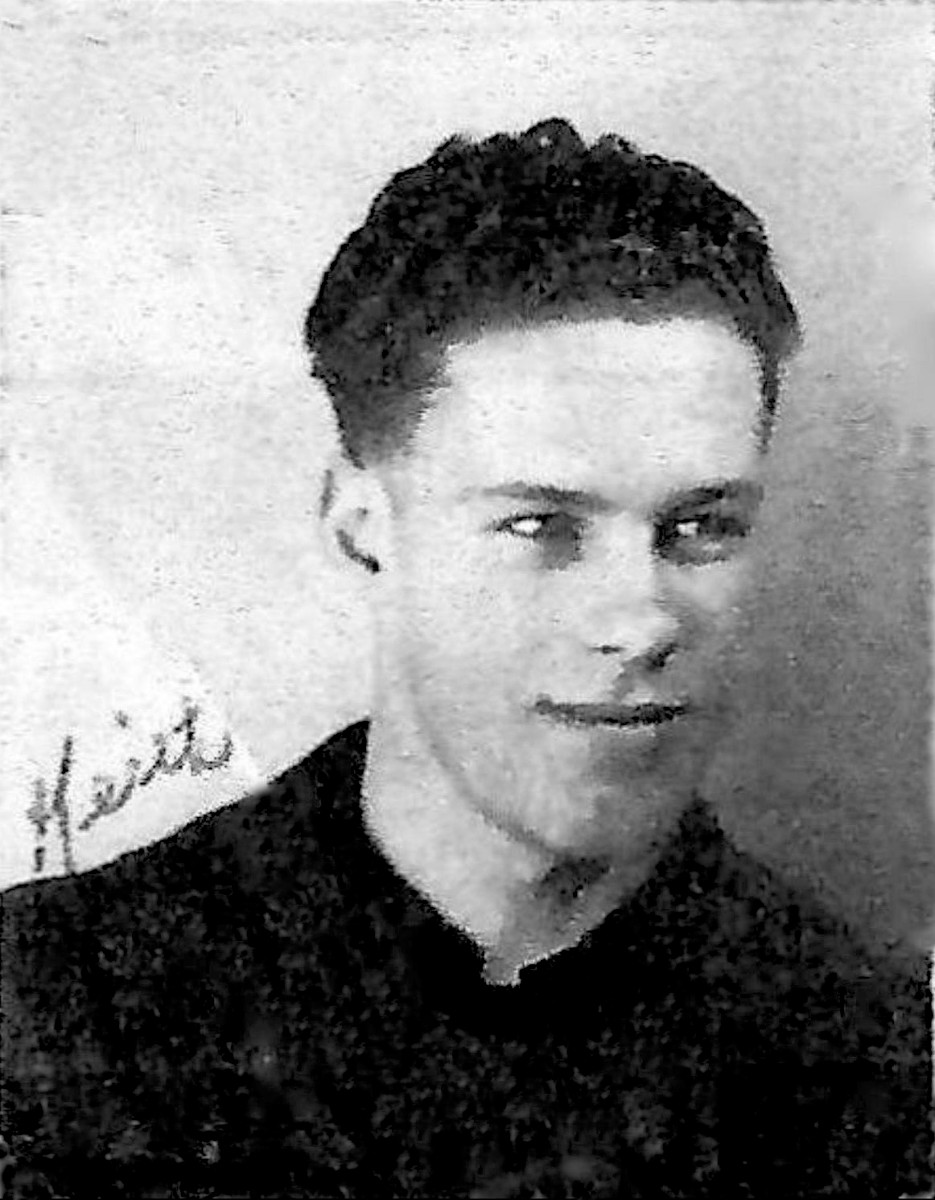
Dinou describes how Caldwell and crew survived a training mishap in Barksdale Air Base, Louisiana, “One day, late in May, we were scheduled to fly a Blue Bomb mission. We had an instructor with us, for what purpose, 1 have no idea. They seldom included copilots in on the Big Picture. After no more than ten minutes of flight, I noticed a rush of heavy, white smoke emitting from the cabin air duct on my side of the airplane.
It quickly escalated to a point where it became obnoxious to my breathing. Caldwell and the instructor both noticed it. He immediately ordered us to
turn around and bring the ship back to base. I thought surely the purpose would be to inspect and correct the problem. A corporal came out to the
ship with an enormous screwdriver sticking out of his hip pocket. I thought surely this man must know something. The U.S. Army was not given to assigning tools of that magnitude to just anybody. The pilot-instructor politely excused himself, leaving us in the knowledgeable hands of the skinny corporal.
Our engineer-gunner, a vacant lad named Fowler, proved not much assistance since he confessed there was nothing in the tech manual about white smoke. The skinny corporal removed a cowling or two with his enormous screwdriver, stuck his head inside where the R-2800 engine resided and announced, “OK, Lieutenant. You’re all set to go!” And go, we did. We taxied out, received clearance to take off and off we went once again to the Bombing Range. The heavy white smoke emerged, not ten minutes later, heavier and more offensive than before. Deitrick, the radio-gunner, enjoying the flight from the radio compartment said on the intercom,
“Hey, you guys (completely forgetting military courtesy)
the right engine is on fire!”
I, of course, quickly looked out of my window and sure enough, there was a merry old blaze; flames angrily licking and trailing from the baffles all the way back toward the wheel compartment. “Keith,” I yelled, pounding him on his shoulder. “The damned engine is on fire!” Caldwell, cool as can be,
hit the fire extinguisher bottle. I thought surely, that would have put the darned thing out. It did not. It sort of shook its head, smoldered an instant, and roared back, brighter and angrier than before.
“Get the crew ready to abandon ship,” he said to me. I got on the intercom and did that. We had discussed this before. We had all agreed that the best way to exit at a time like this is from the bomb bay. The crew scrambled onto the cat walk of the bomb bay. We opened the bomb bay doors and when I thought they were ready, I hit the Alarm Bell, signaling the Order to Jump.
I am happy to say that we all got out alive. We were the first B-26 crew to survive a bailout without a fatality.”
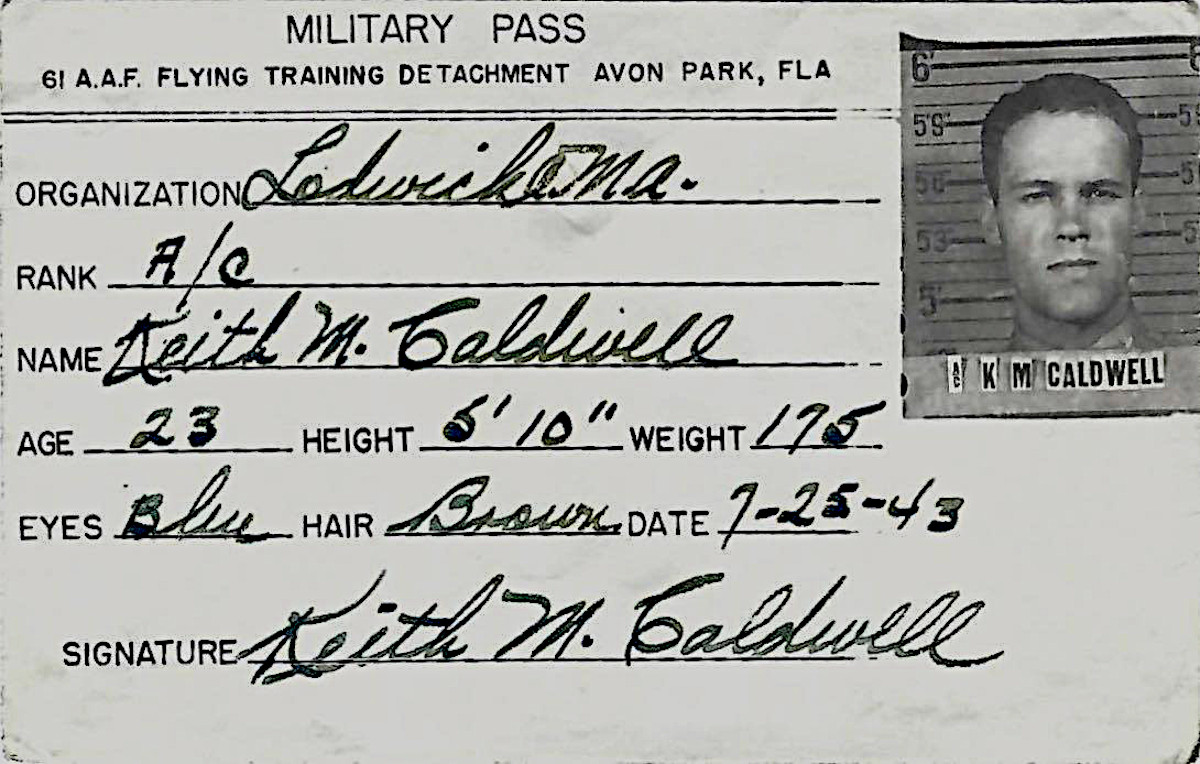
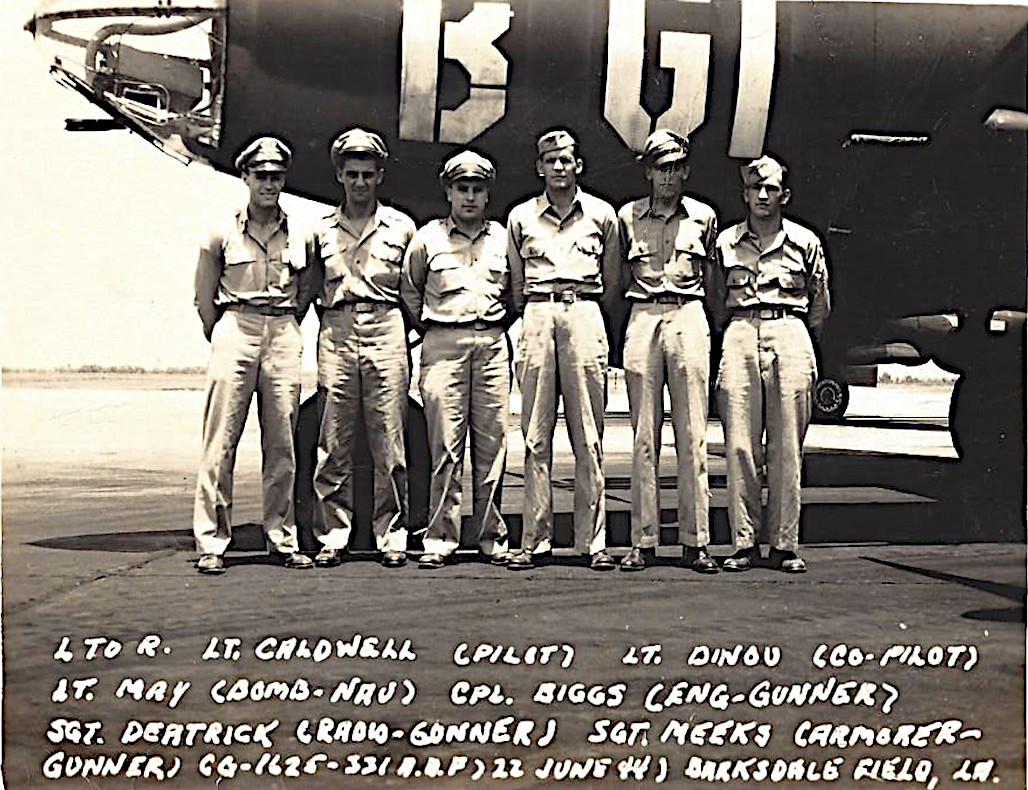
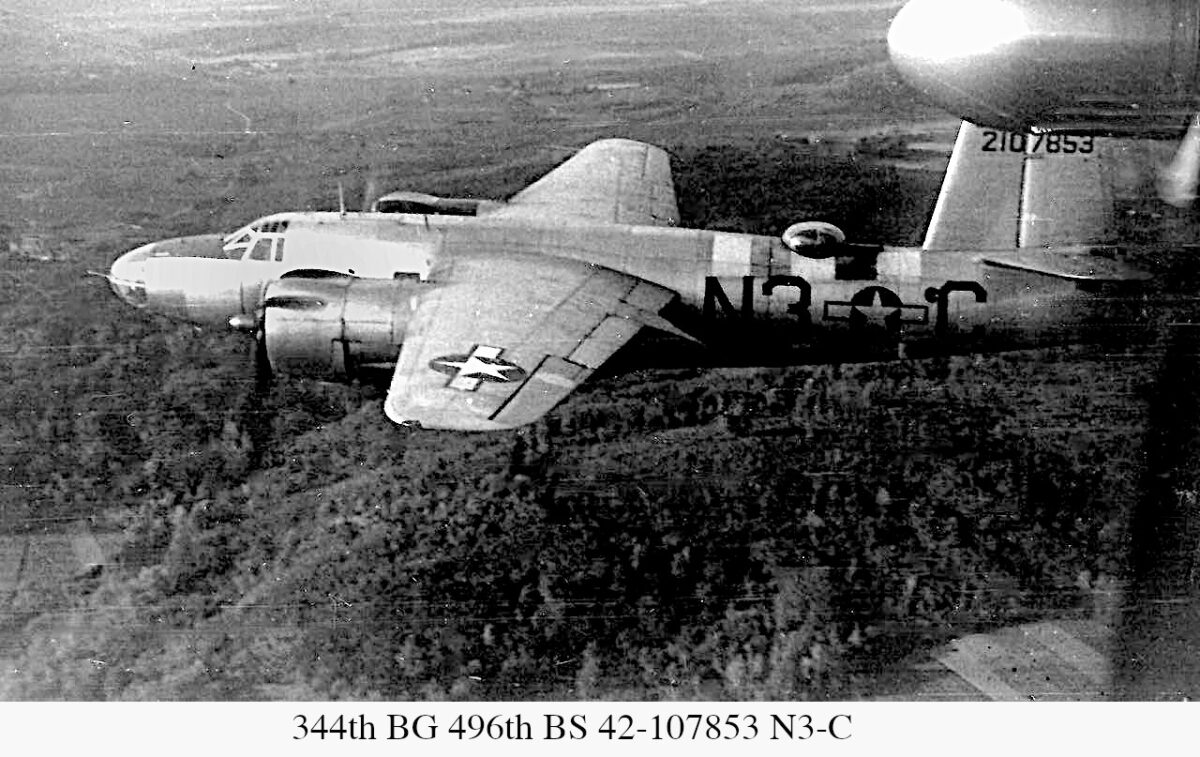
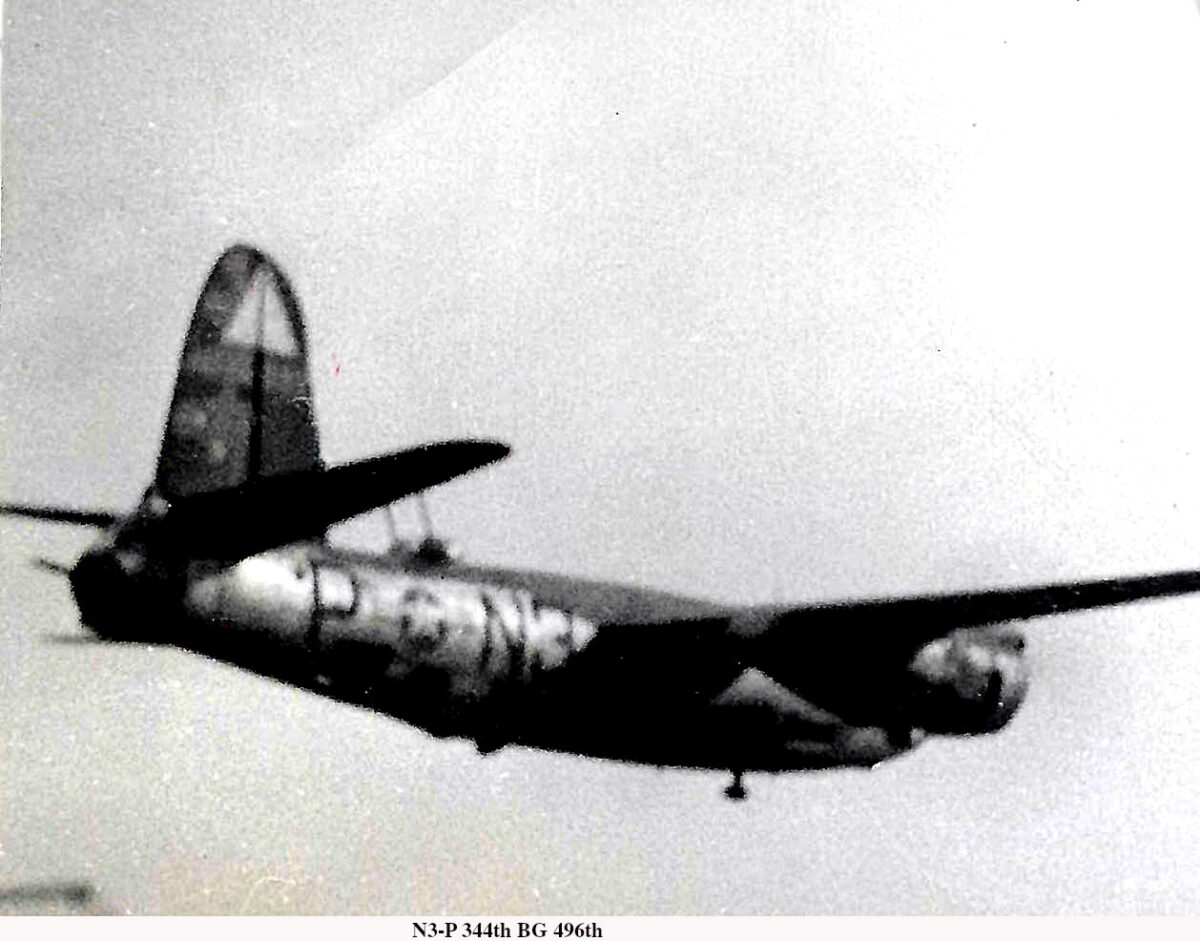
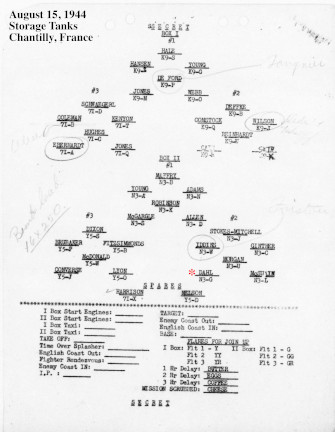
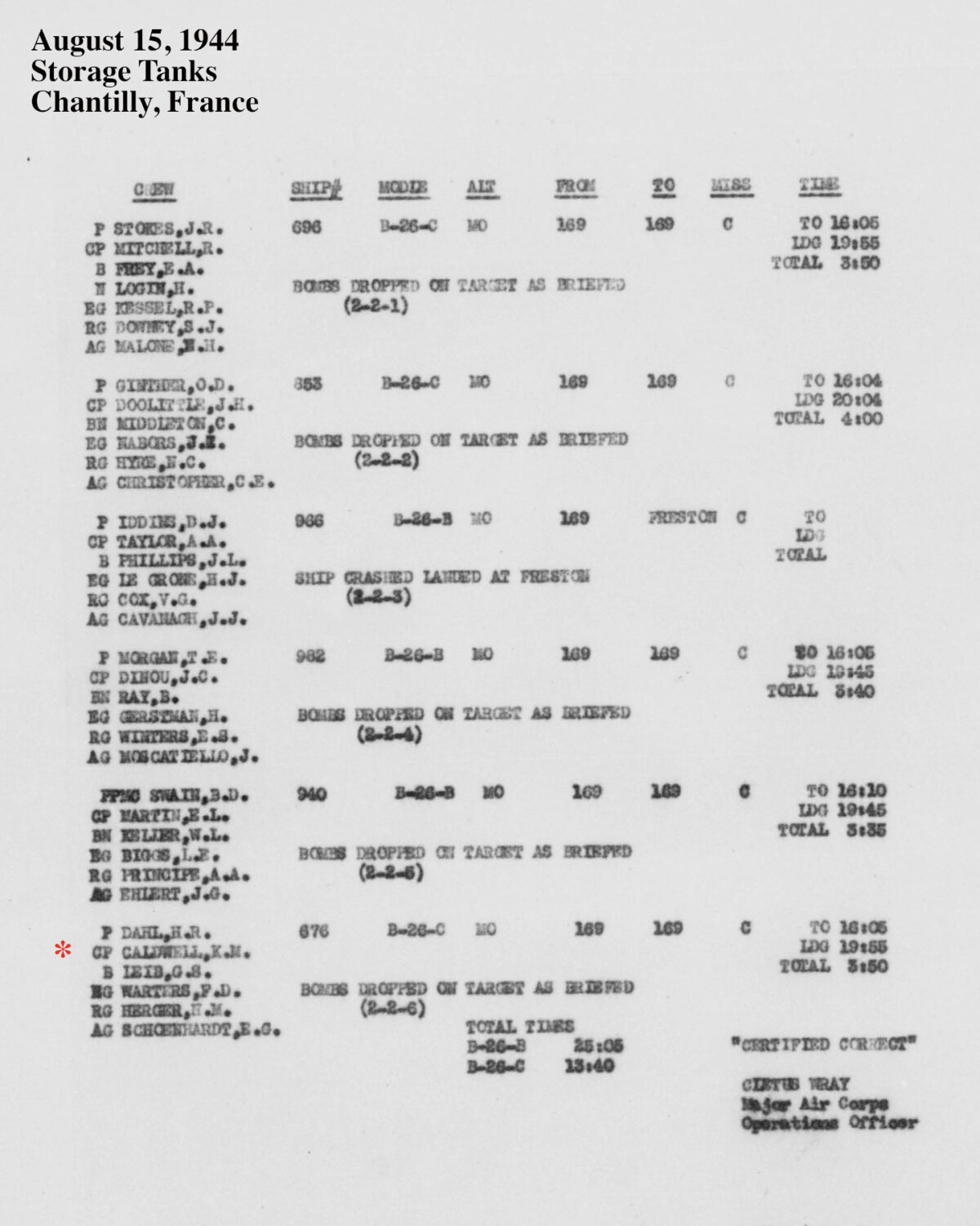
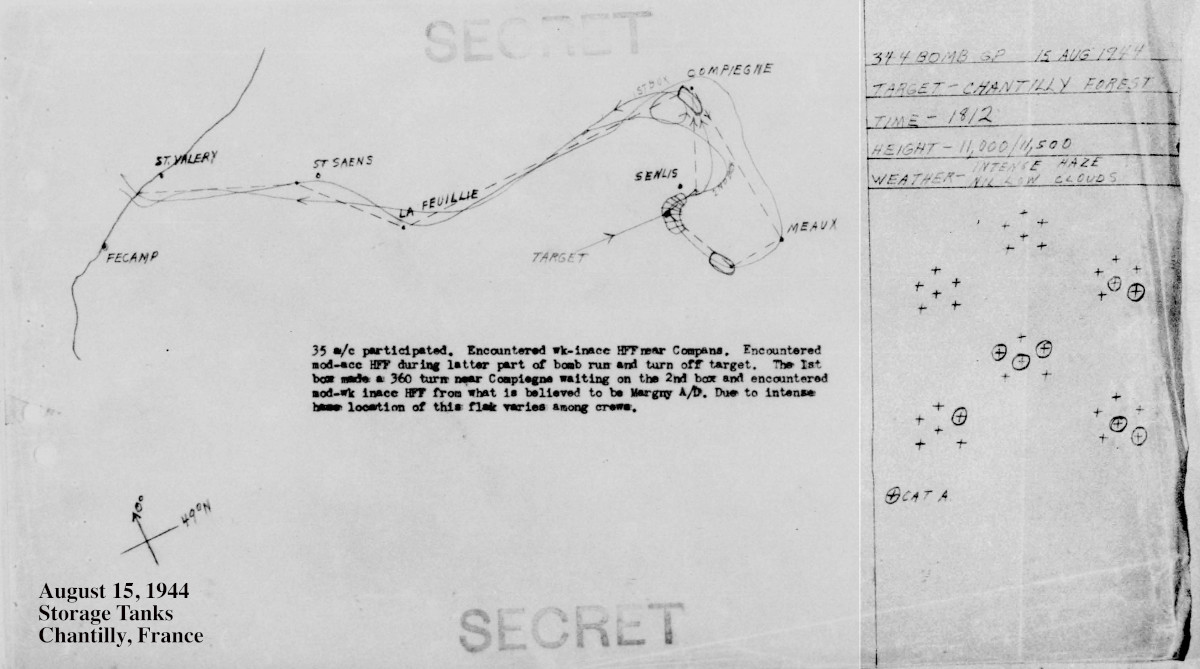
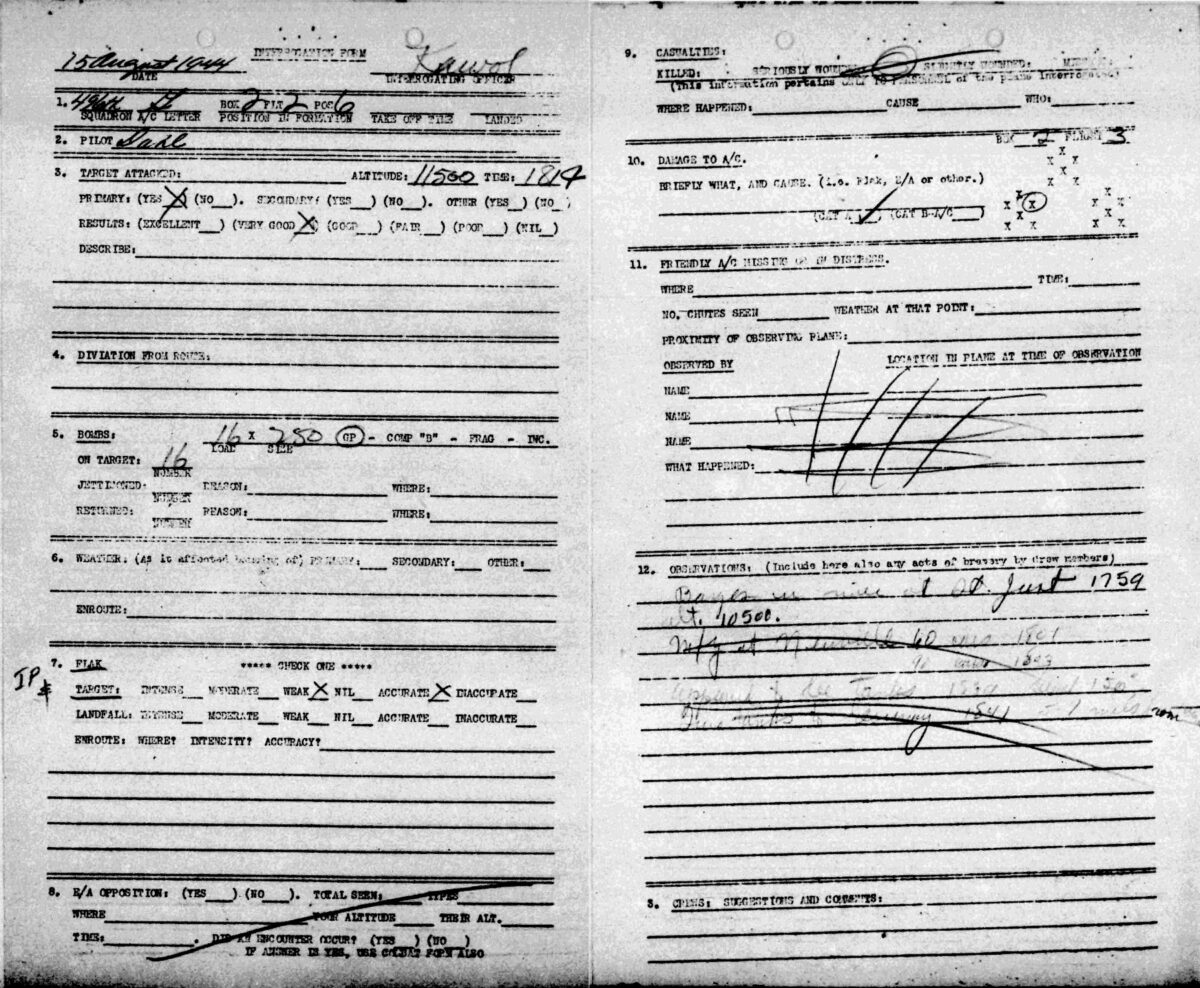
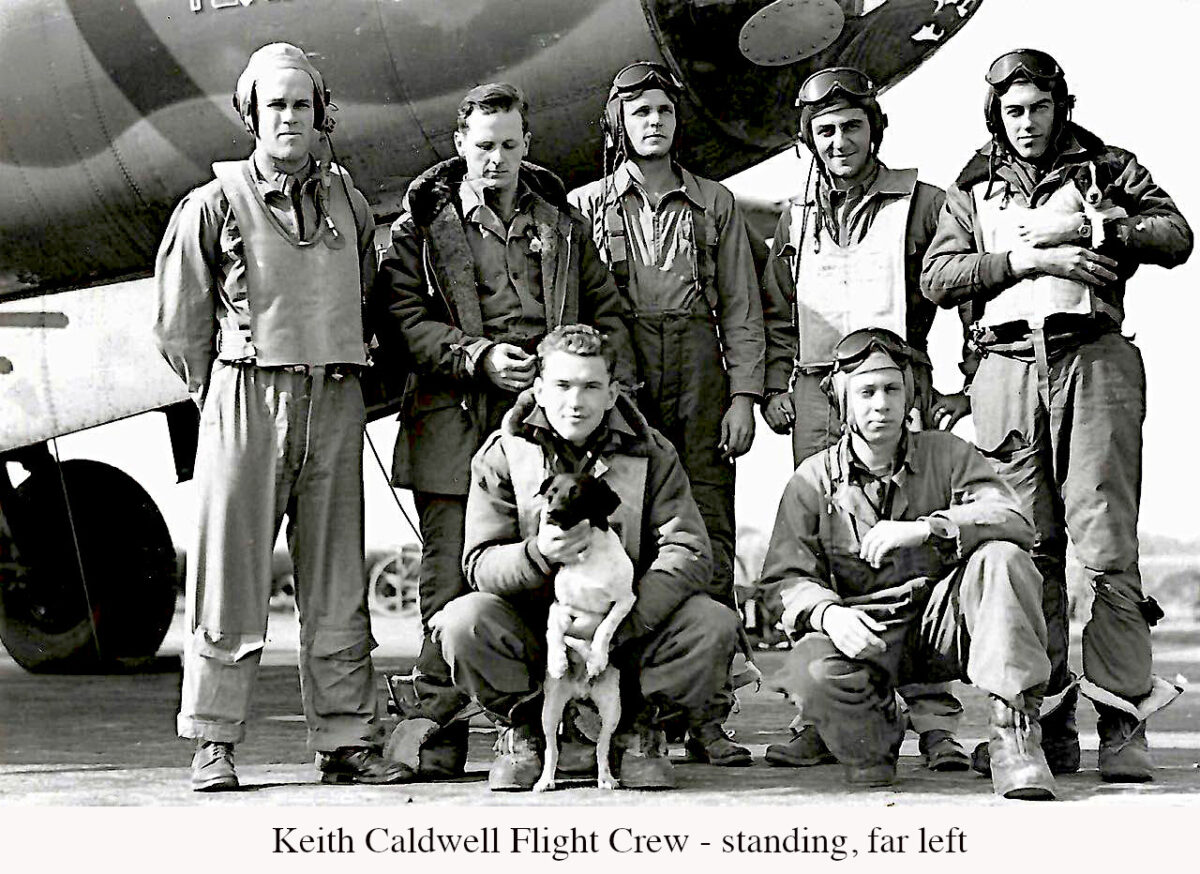
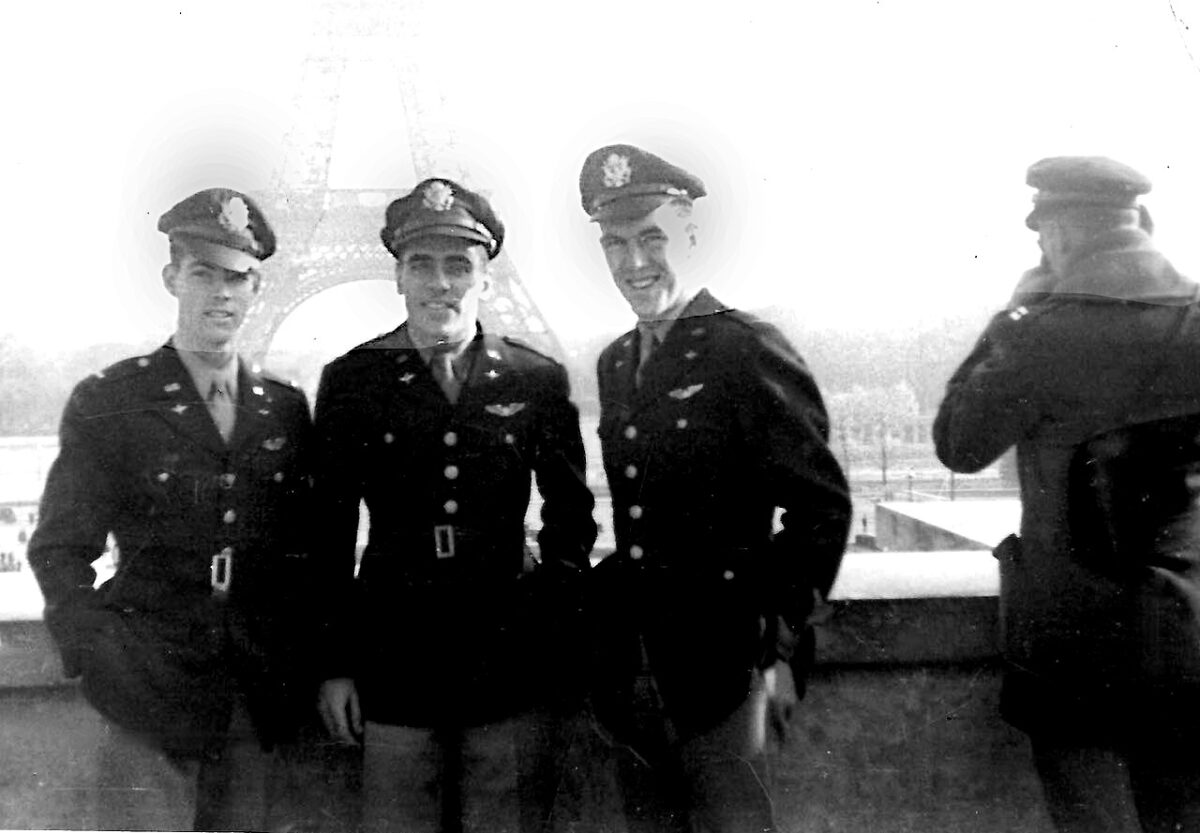
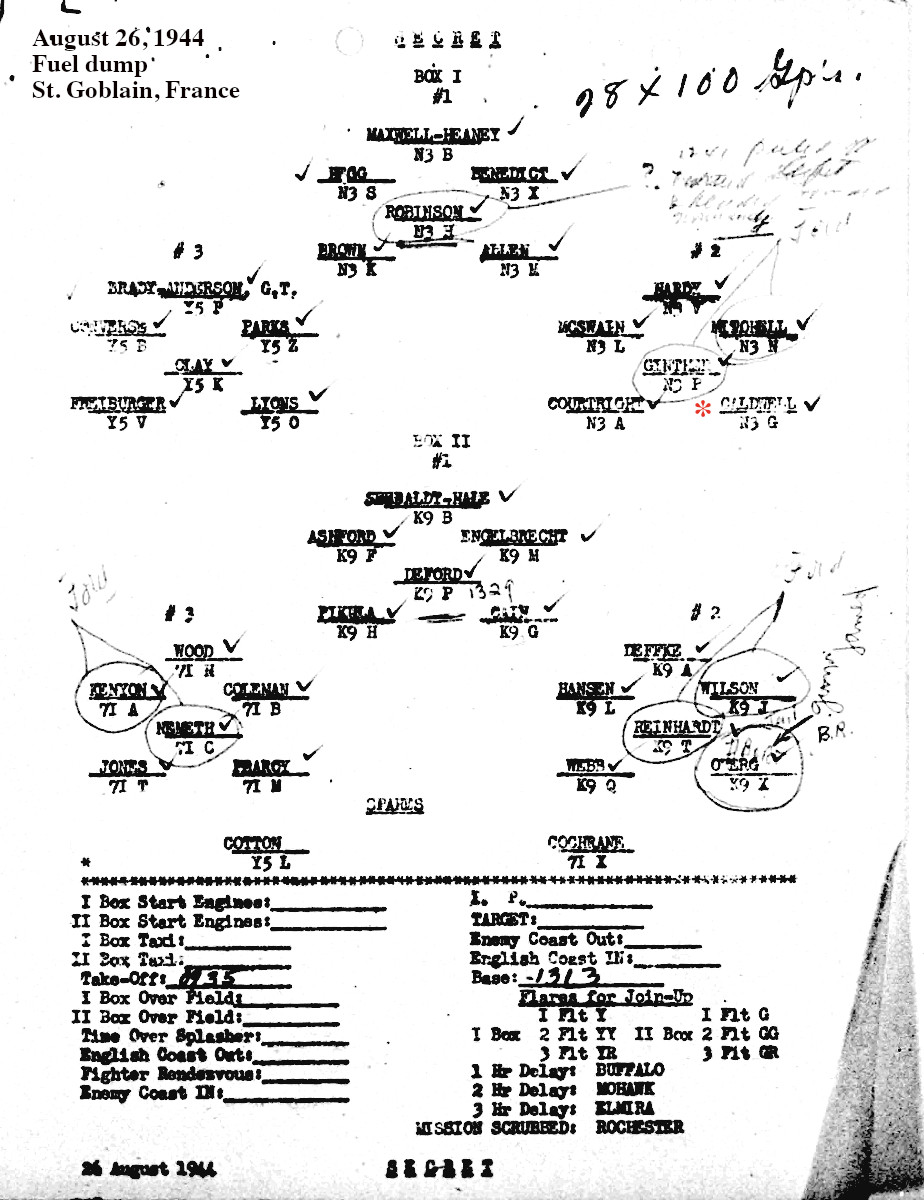
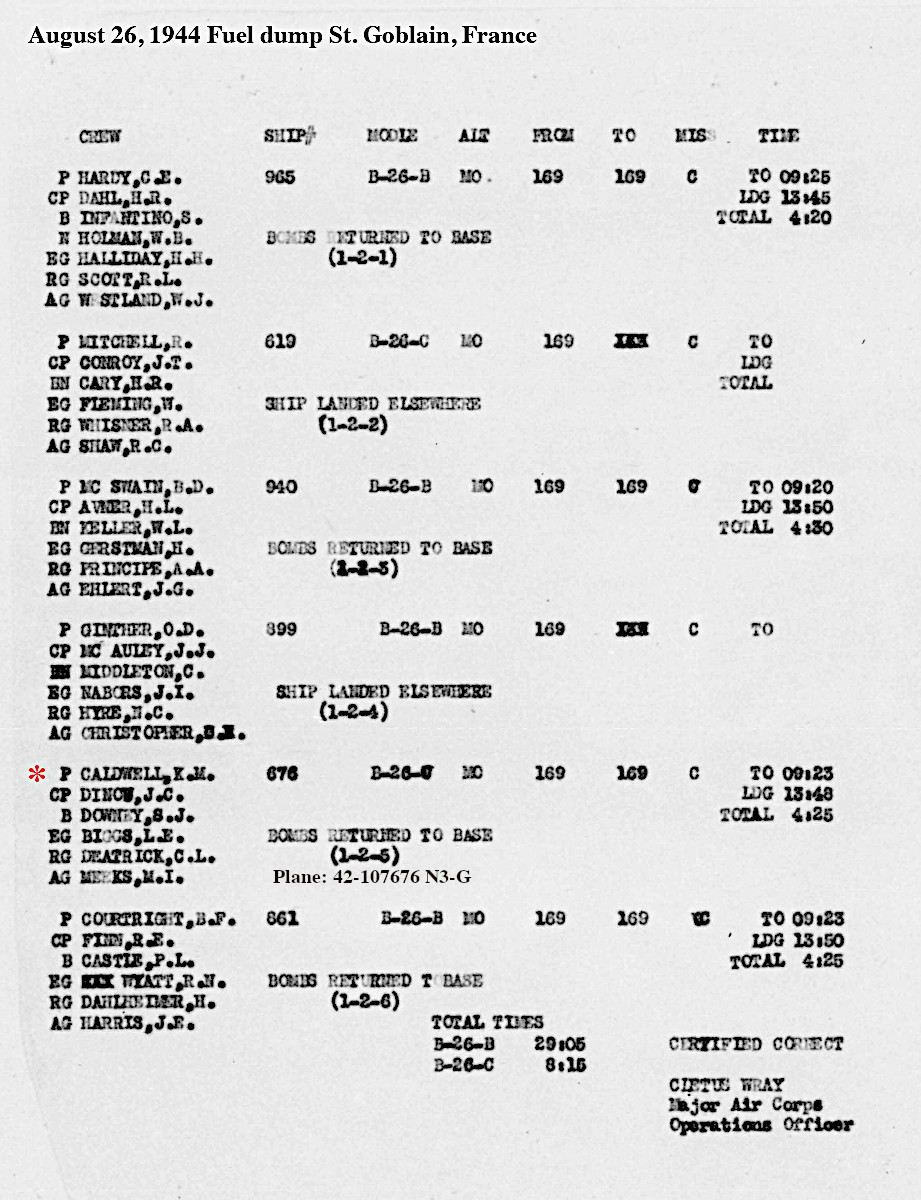
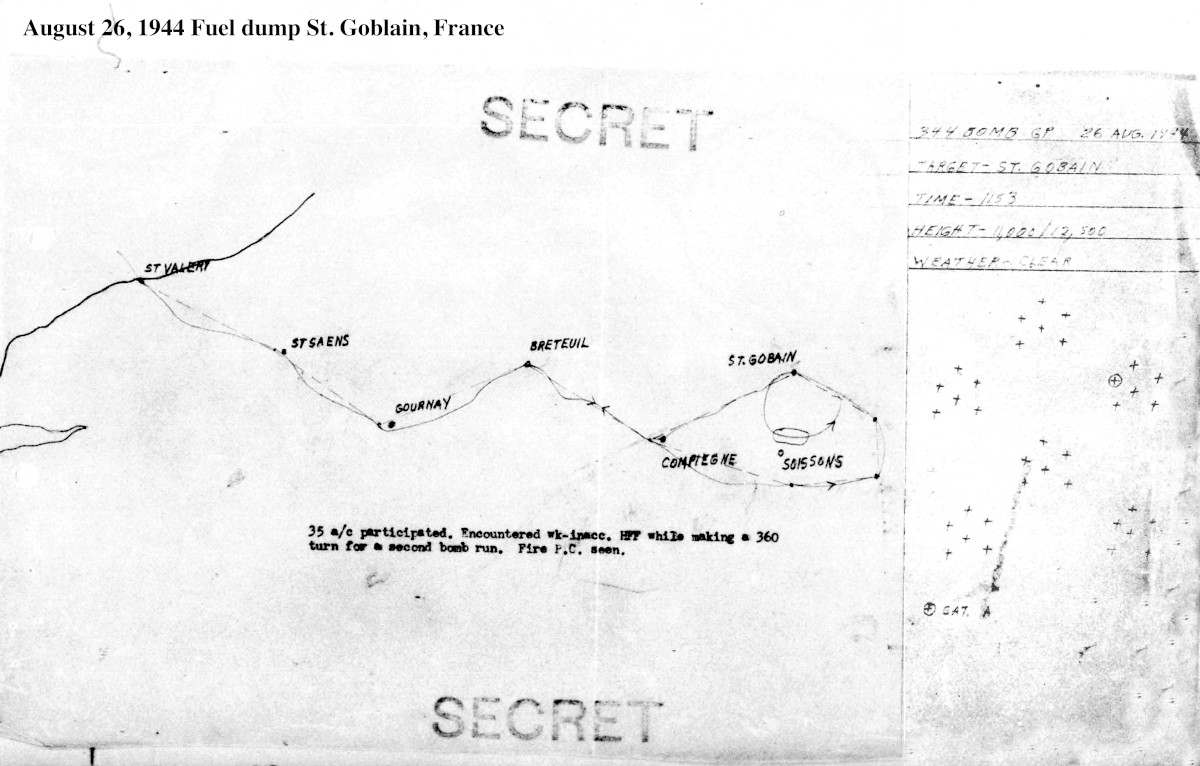
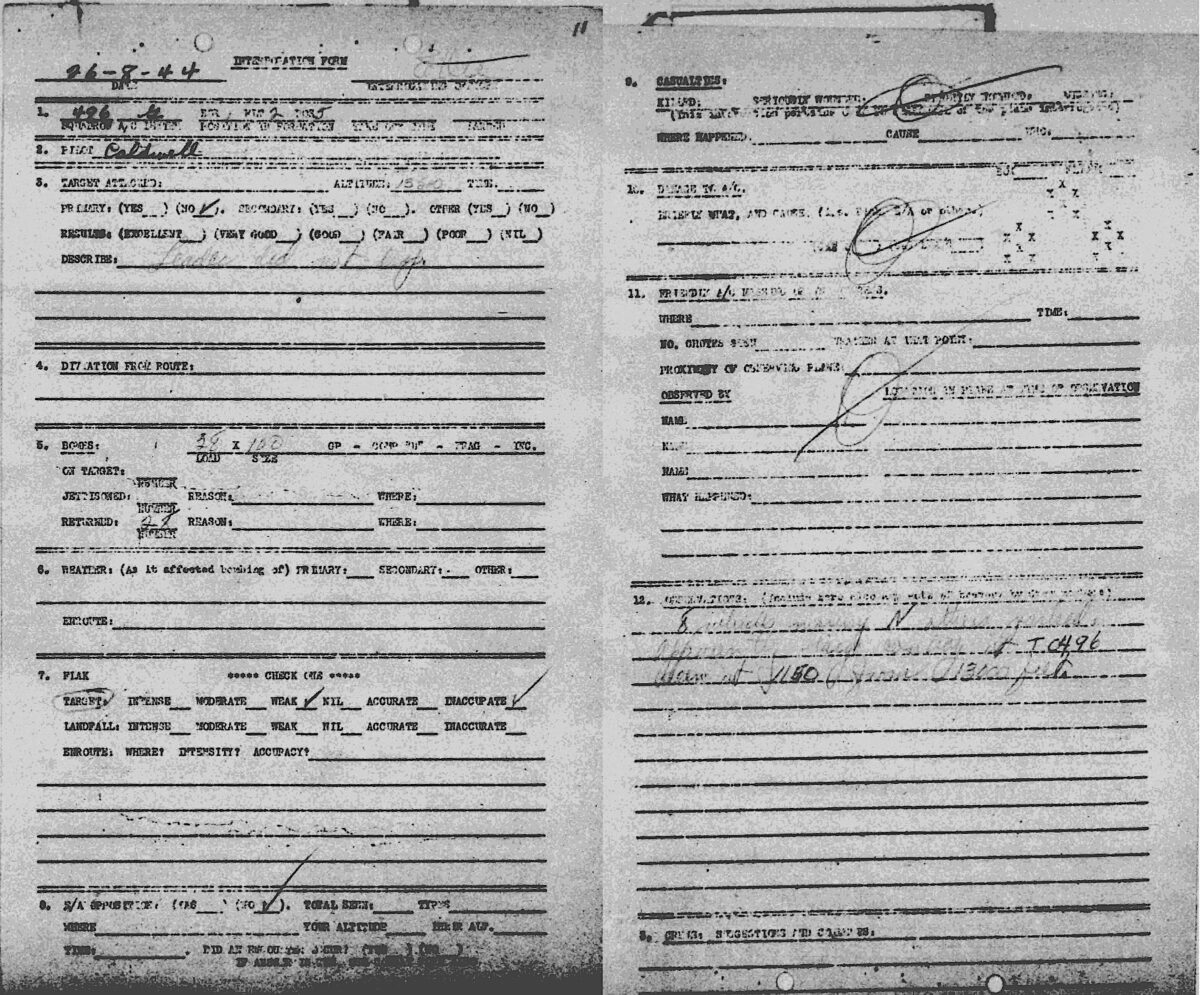
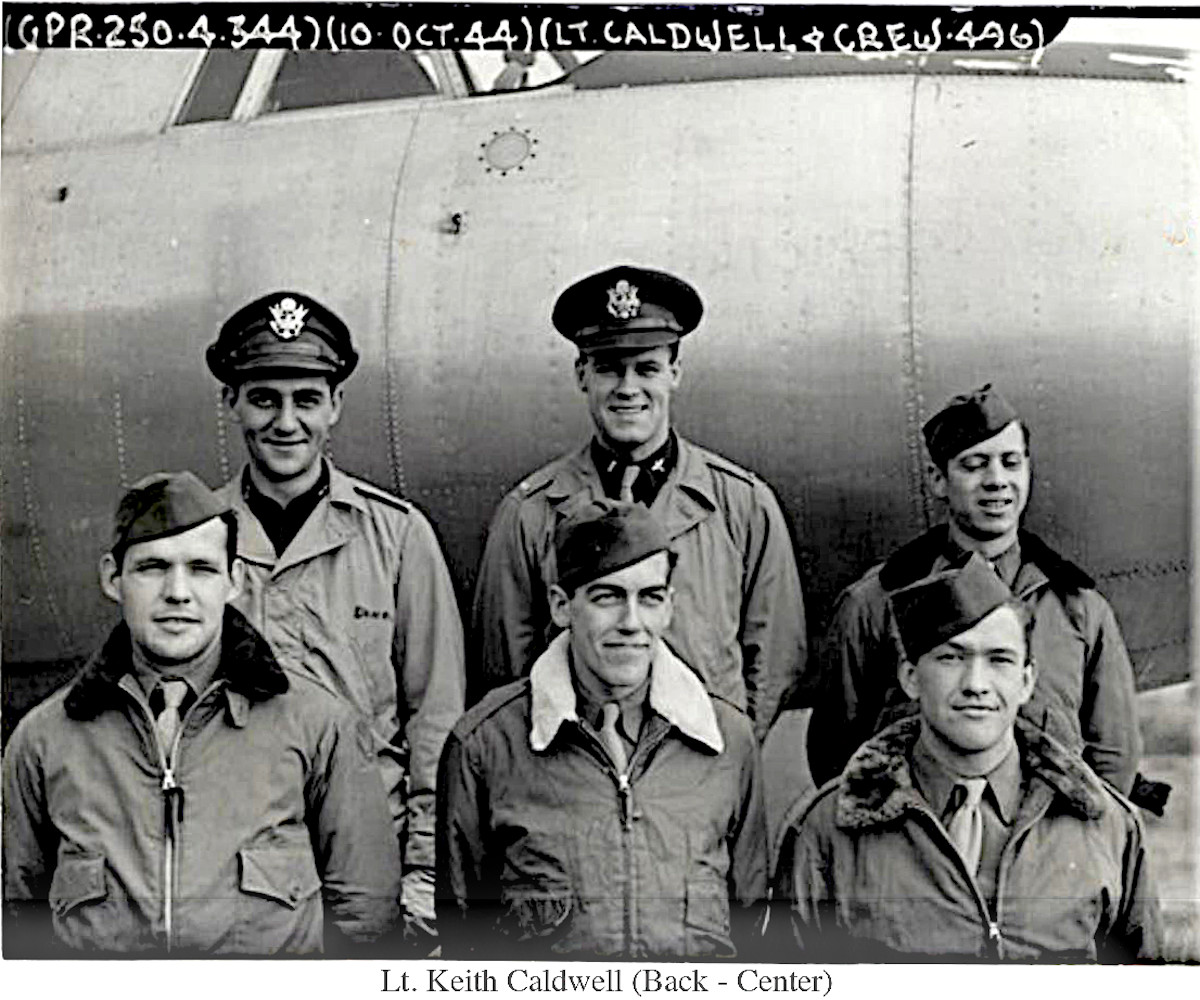
Oct. 2, 1944 42-95980 N3-M “Lucky Lady” 496th: Shot down by flak on the 2/10/44 mission to the industrial area at Ubach, Germany. The aircraft flown by 1st Lt. Keith Caldwell was hit by 88mm flak in the right engine just after bombs away. The engine was shut down and the prop feathered, but there was also fuel spraying back into the aircraft from a damaged fuel cell in the wing. Limping back from the mission the left engine also gave up and the crew all successfully bailed out, landing in friendly territory. Pilot 1st Lt. Keith Caldwell, Co-pilot 2nd Lt. John Cristophe Dinou, Larry Biggs Eng/Top Gun, Mark Meeks Arm/Tail Gun.
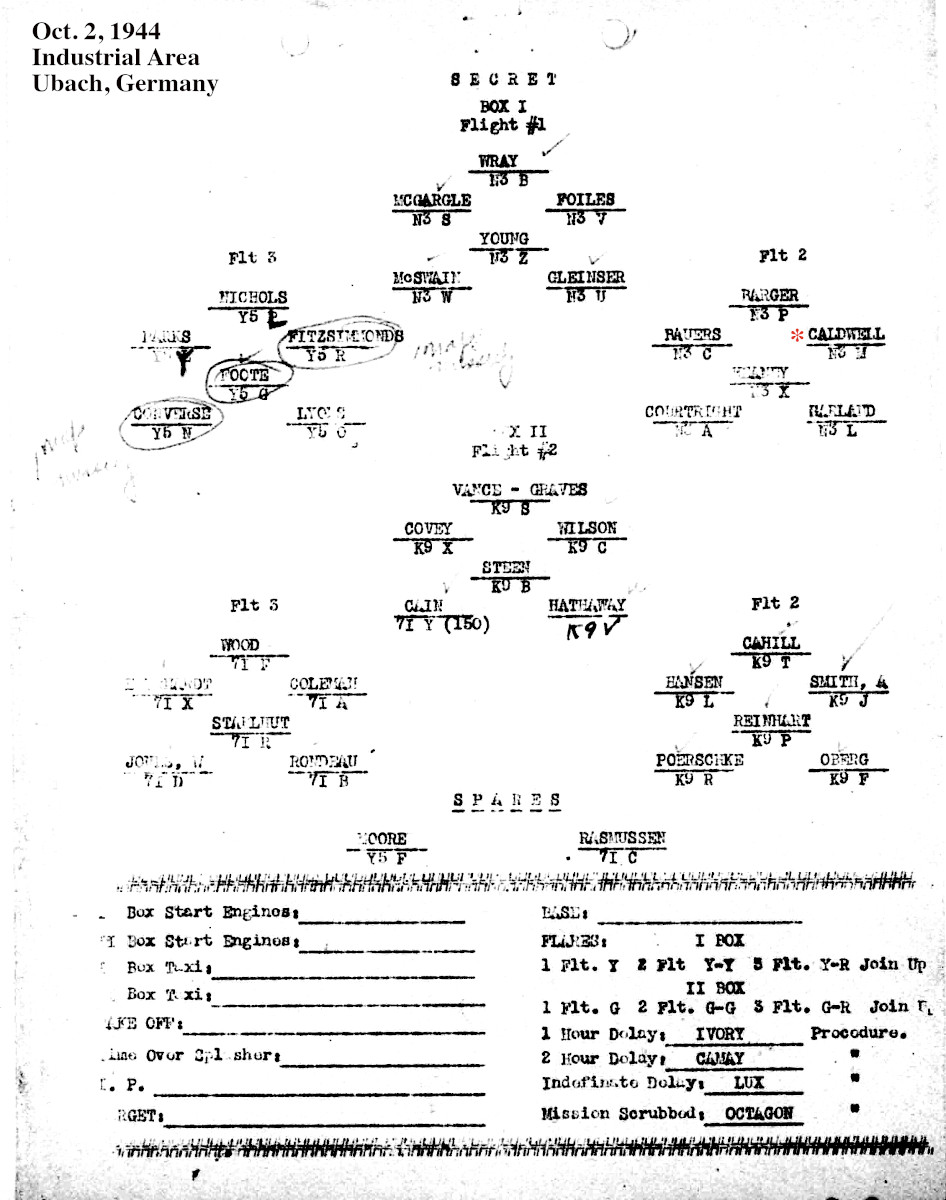
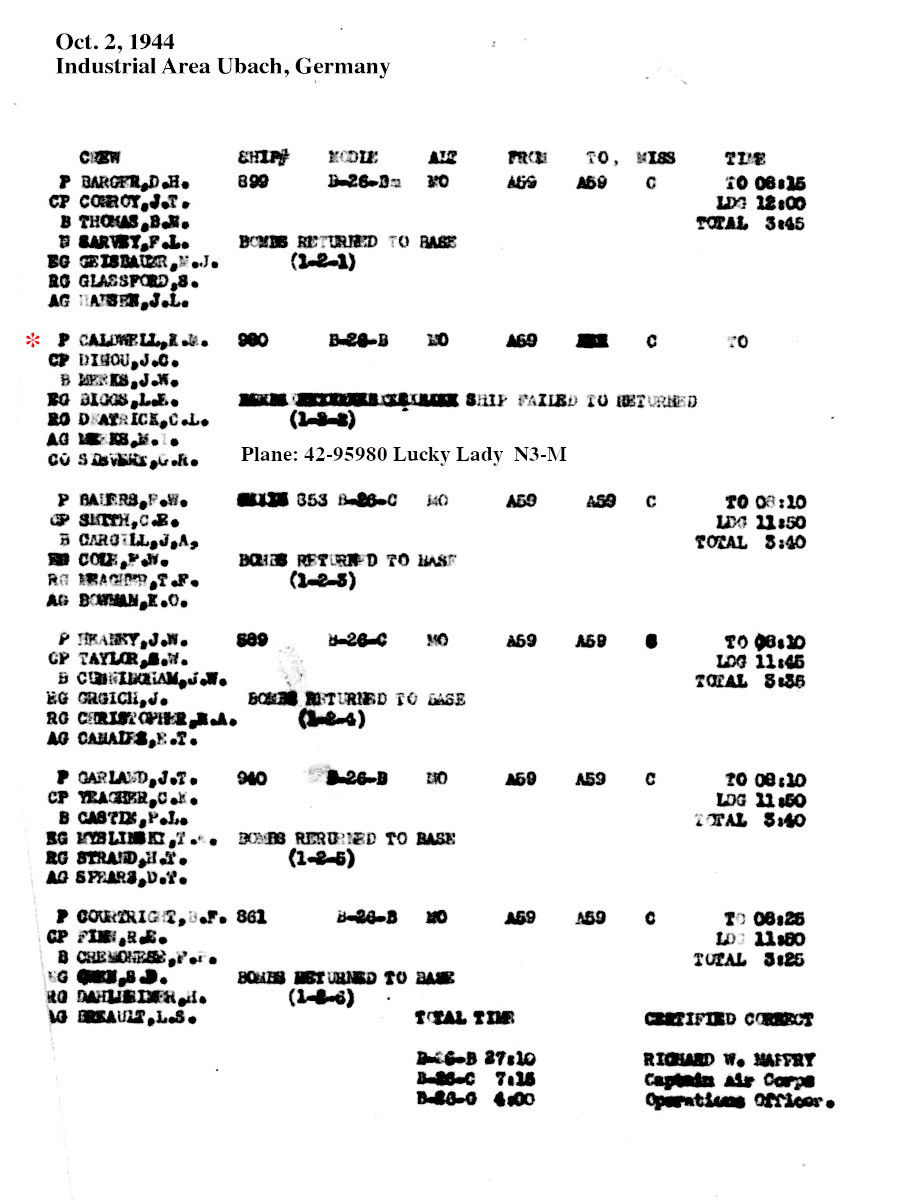
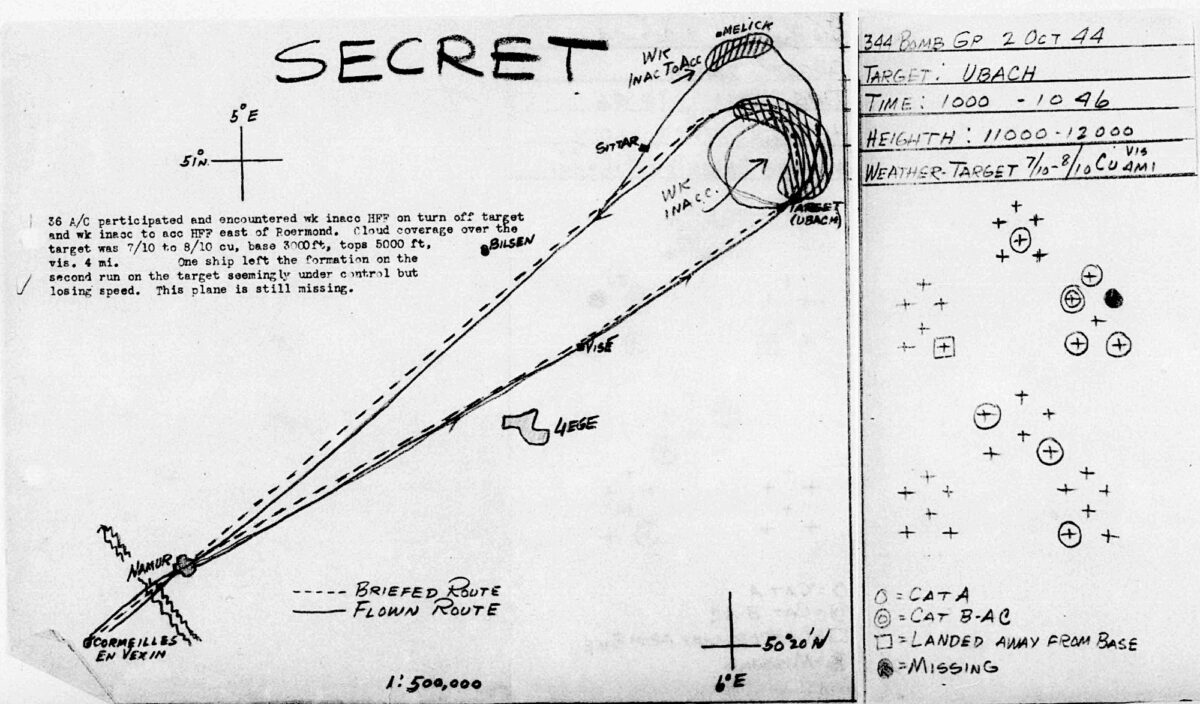
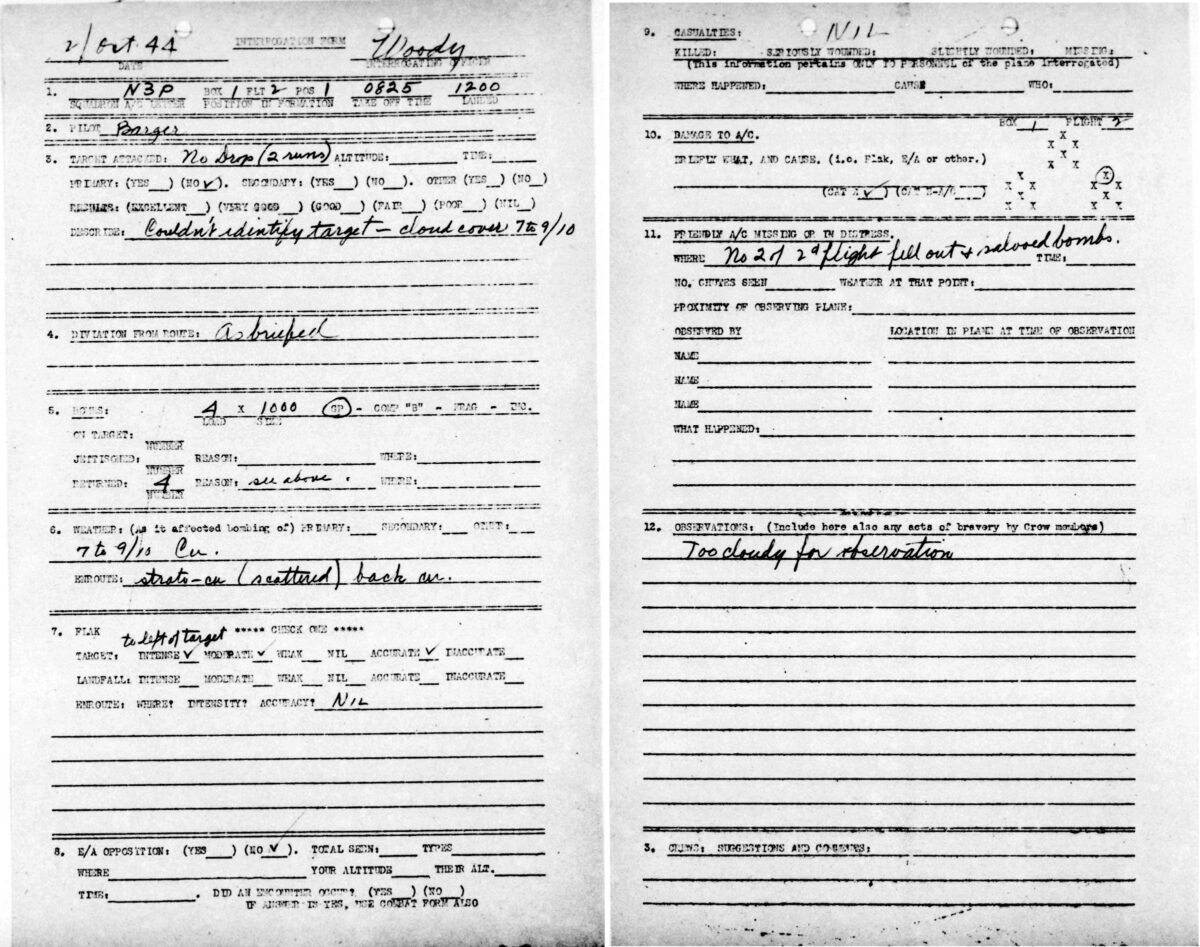
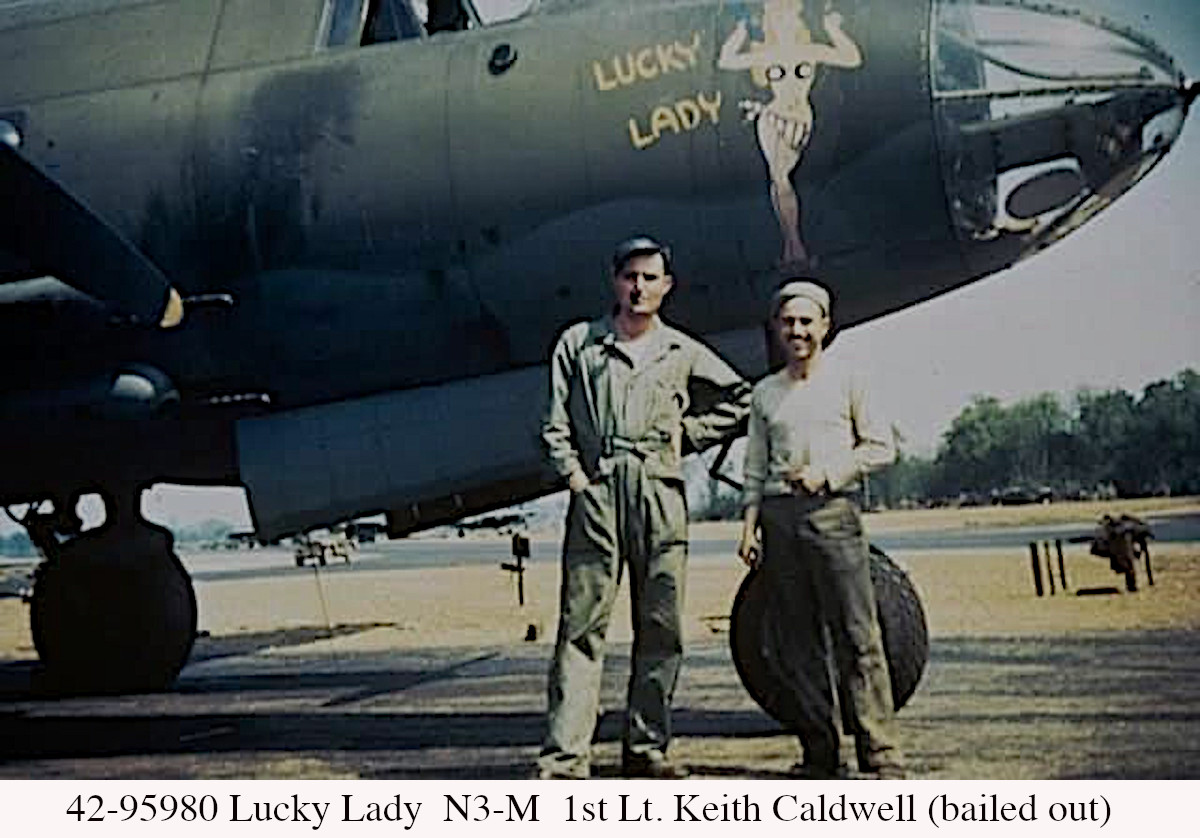
An excerpt from co-pilot Dinou’s account of being shot down that day:
“We caught a savage burst at 1506. Shell Number 42-387, exploded between the right engine nacelle and me. By nothing less than a miracle and the sturdy construction of a B-26, the wing didn’t break off. Just then the Intercom crackled with screams from the guys in the rear.
“Hey! We’re drowning back here. Help! Do something!” I was on my way, already moving my seat back, turning over the controls to Caldwell. It was my job in a situation like this to get our togglier, Junior Meeks, out of the nose. That accomplished, Keith yelled in my ear to turn off the main switch to the right wing gas tank. I unbuckled and hustled toward the bomb bay.
1st. Lt. Keith M. Caldwell, up in the cockpit had his hands full, immediately the right engine quit. He felt the awful blow on the right side of “Ill Wind II” and like a paternal shepherd, sensed the mortal blow to his airplane. He yanked back the right engine throttle while at the very same time he jammed, with all the strength in his powerful leg, the left rudder. This counteracted the vicious tendency of the Martin B-26 Marauder to flip over on its back. He fought to trim the controls so the airplane flew more easily….”
Click here to read Dinou’s full account of the ensuing crash!
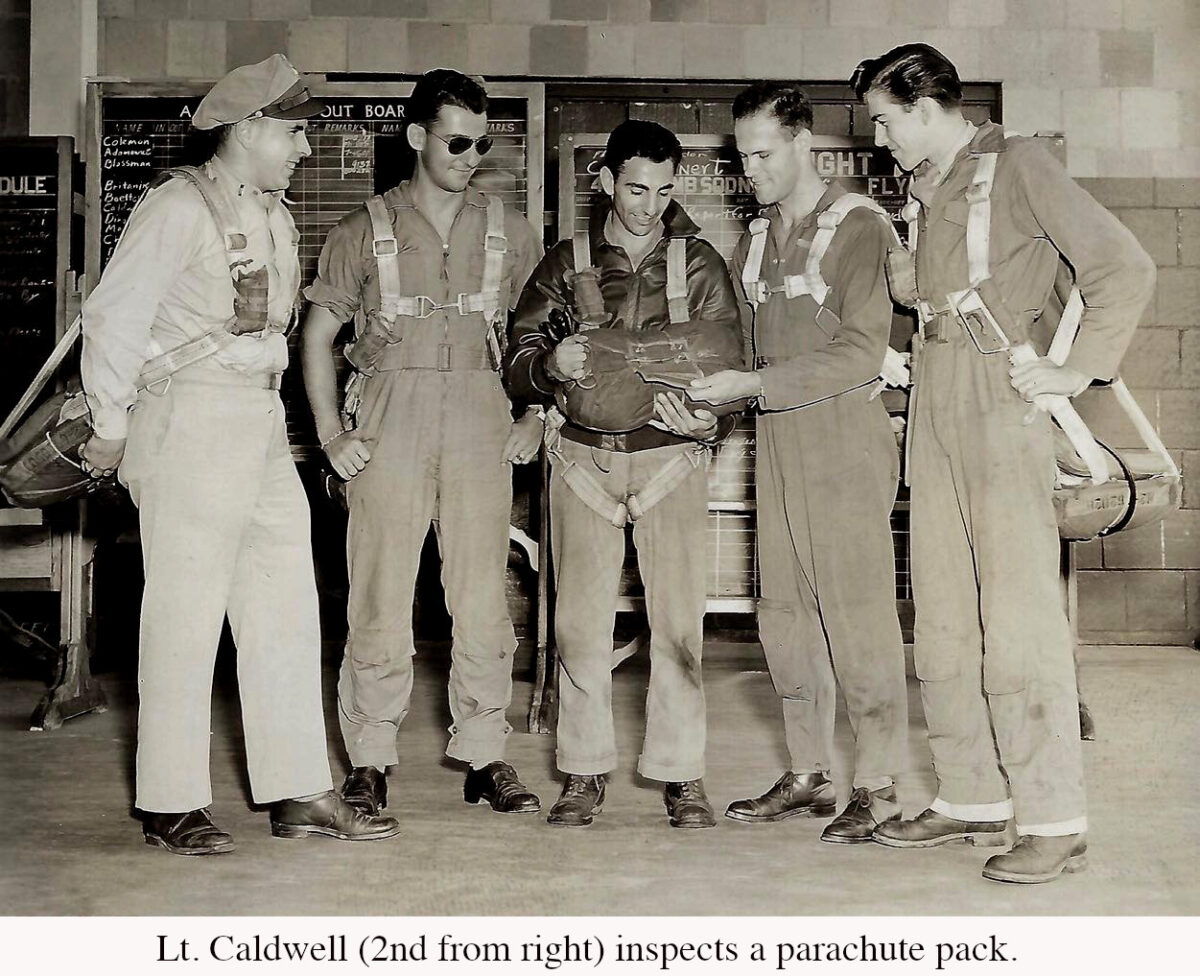
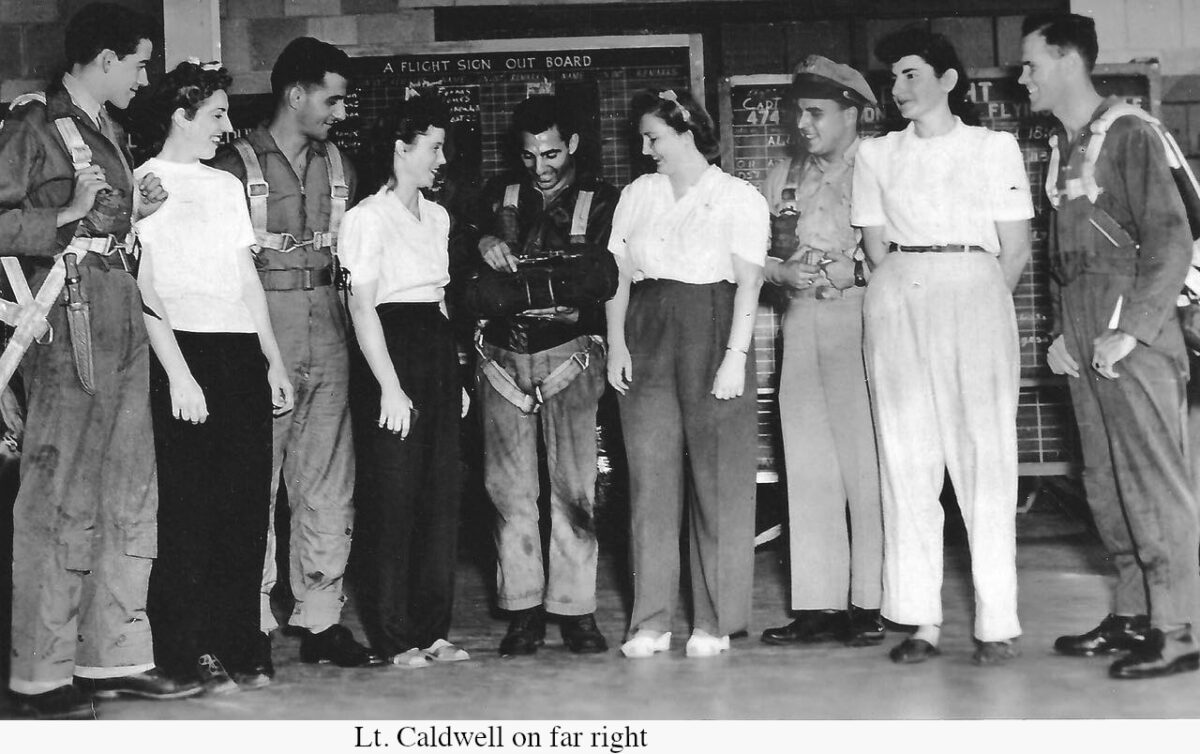
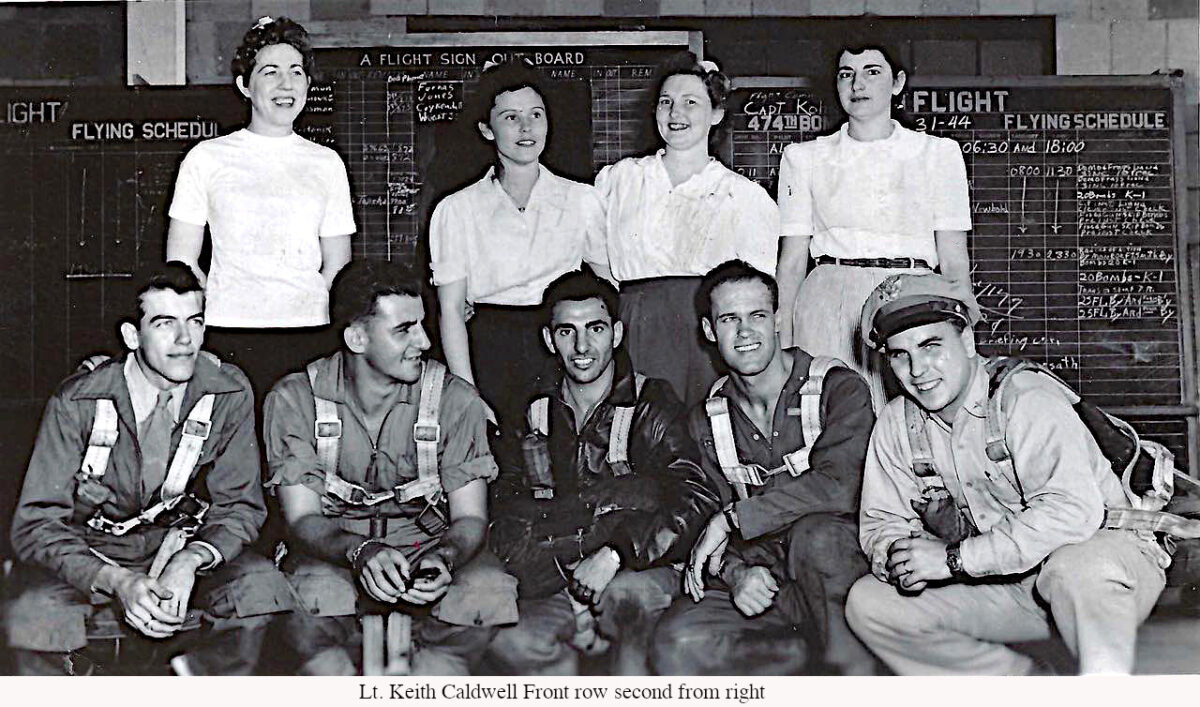
Another crash happened while Caldwell was training Dinou to move up from co-pilot to pilot. Dinou recounts, “Bless Caldwell. Every chance he got he’d grab me, run up to Major Richard Maffry, the Ops Officer, and get us a plane to fly. There was always a pretext; slow time on a new engine; a check ride on to clear the Red Lines, etc. Off we’d go, piling up time for me in the left (pilot’s) seat.
Flying became fun once more; shooting takeoffs and landings. Practicing join-ups with other flights. We even dropped Blue Bombs (dummy bombs) one day although we had plenty of the other kind around. Just a safety precaution, I suppose.
One particular day, around the first of December, we’d been in the air about an hour when I noticed some thick, ugly scud forming around the bend of the Oise River which ran through the village of Pont Oise. The Oise is a tributary of the Seine.
I pointed this out to Keith. “I think this stuff will move south across our runway. Do you want to go in or take the chance of being fogged out?”
“I think we can land real fast and be having dinner before this stuff closes down the field. Get us clearance from the tower and let’s change seats.
I’ll fly it down.”
I got on the RT and received landing instructions for a straight-in approach.
We lined up with the runway, clear and visible at our end. We no sooner touched down when this scud shot across the runway, fogging it up so that
we could not see. I then understood why veteran pilots refer to fog as ‘soup.’ This stuff was as thick as soup. Keith by now was burning rubber, standing
on the brakes to bring the big bomber to a quick stop.
No sooner than the nose wheel came down when another airplane loomed out of the fog, taking off from the same runway, but in the opposite
direction. We hit one another, head on! I can still see, in nightmares, the propeller of the other ship racing toward me, surely to cut me in half. We splattered one another over the whole middle of the A-59.
The big Marauder saved my life. Fortunately for Keith, our engineer, Larry Biggs, from Silsbee, Texas, and me, the other ship was a silver Twin-Tailed
Beech Craft, smaller than a B-26.
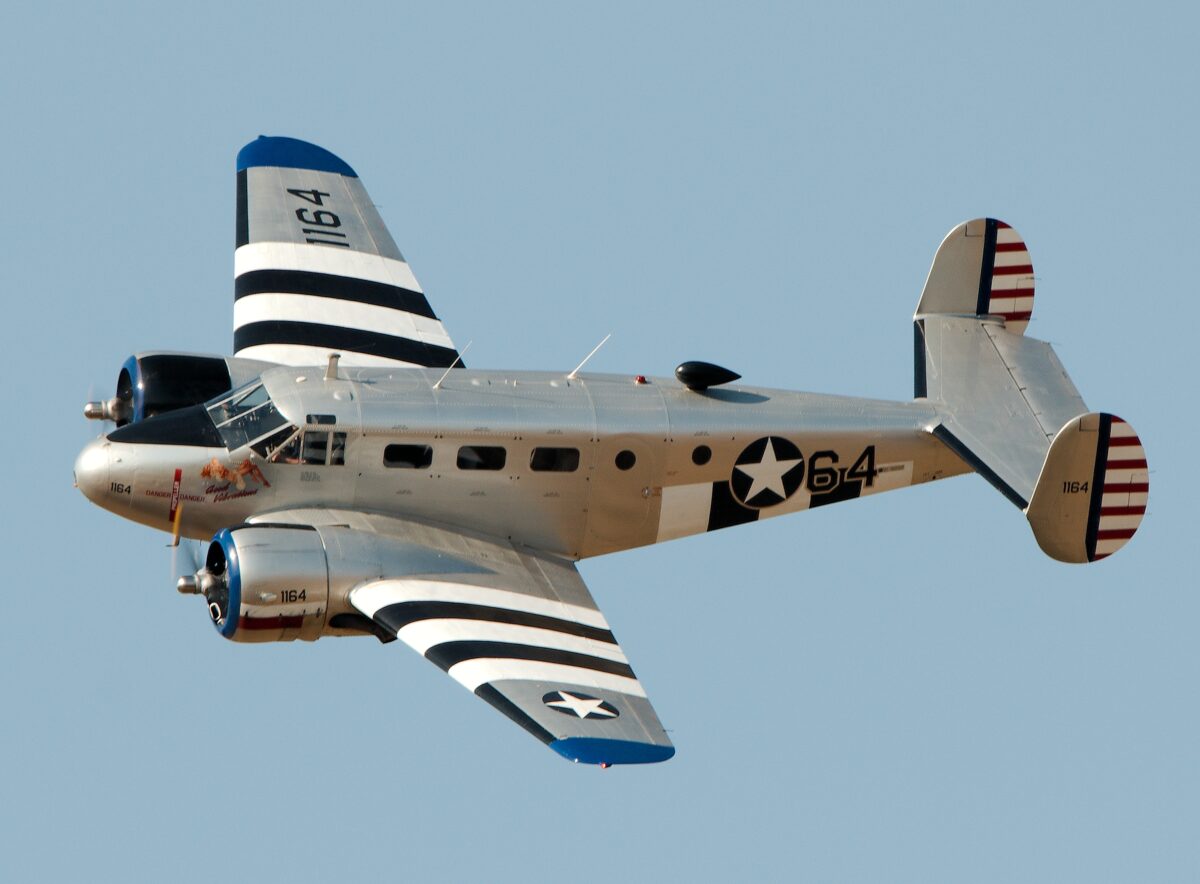
Both pilot and copilot of the Beech Craft were killed. They had to cut the bodies out with acetylene torches. I spent the next few days with Doc
Horsely picking small pieces of Plexiglas out of my face, wrapping bandages
around my knee, and generally talking me out of turning in my wings.
The pilot of the Beech Craft, a Major, had been visiting the 344th BG on an inspection tour, checking safety procedures. Confronted with the foggy
scud approaching our field, he decided to run for his home airdrome before having to spend another night away. He simply hopped in his ship, did not
receive clearance from our tower, fired up and away he went. They found his headset still hanging in its straps when conducting the crash review. We were completely exonerated.”
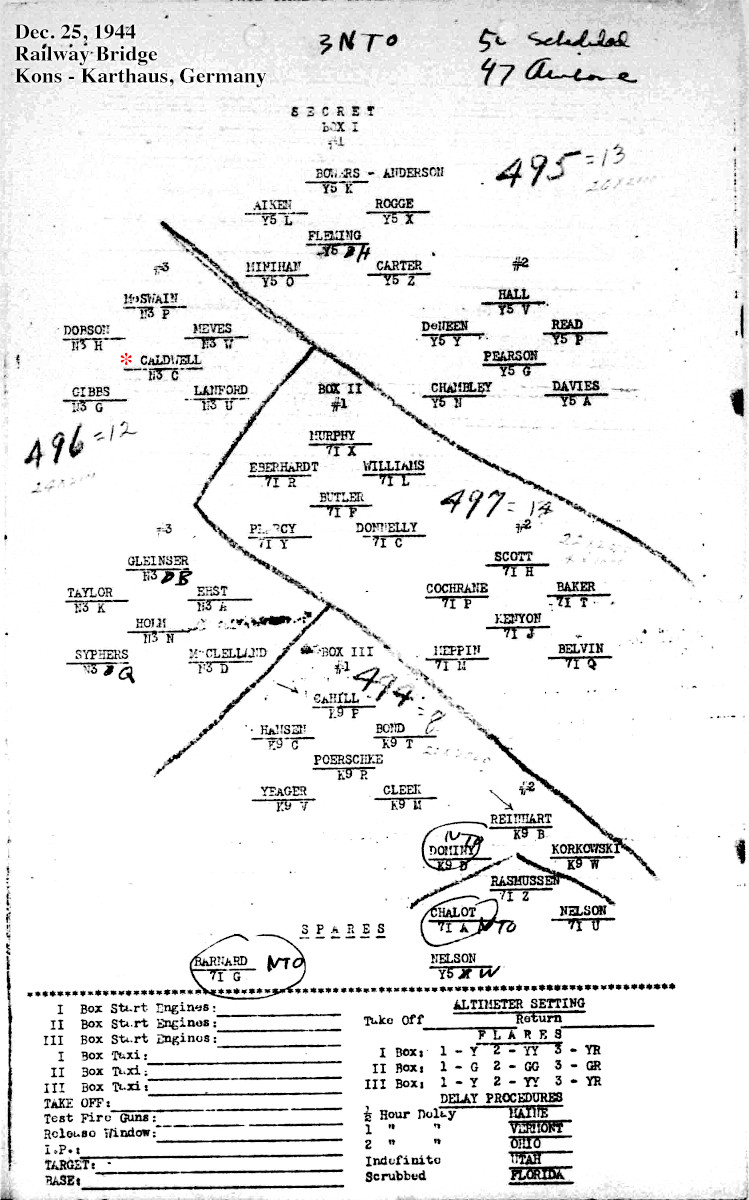
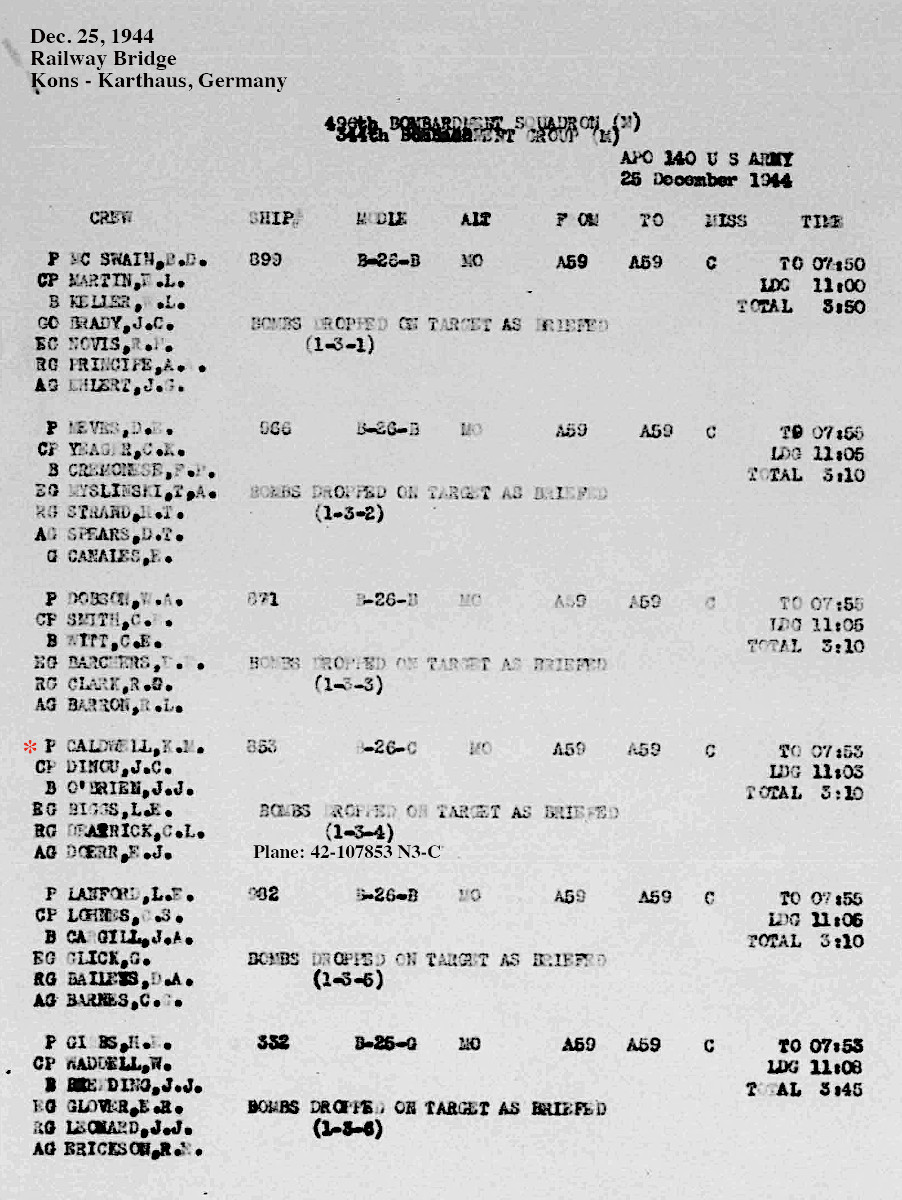
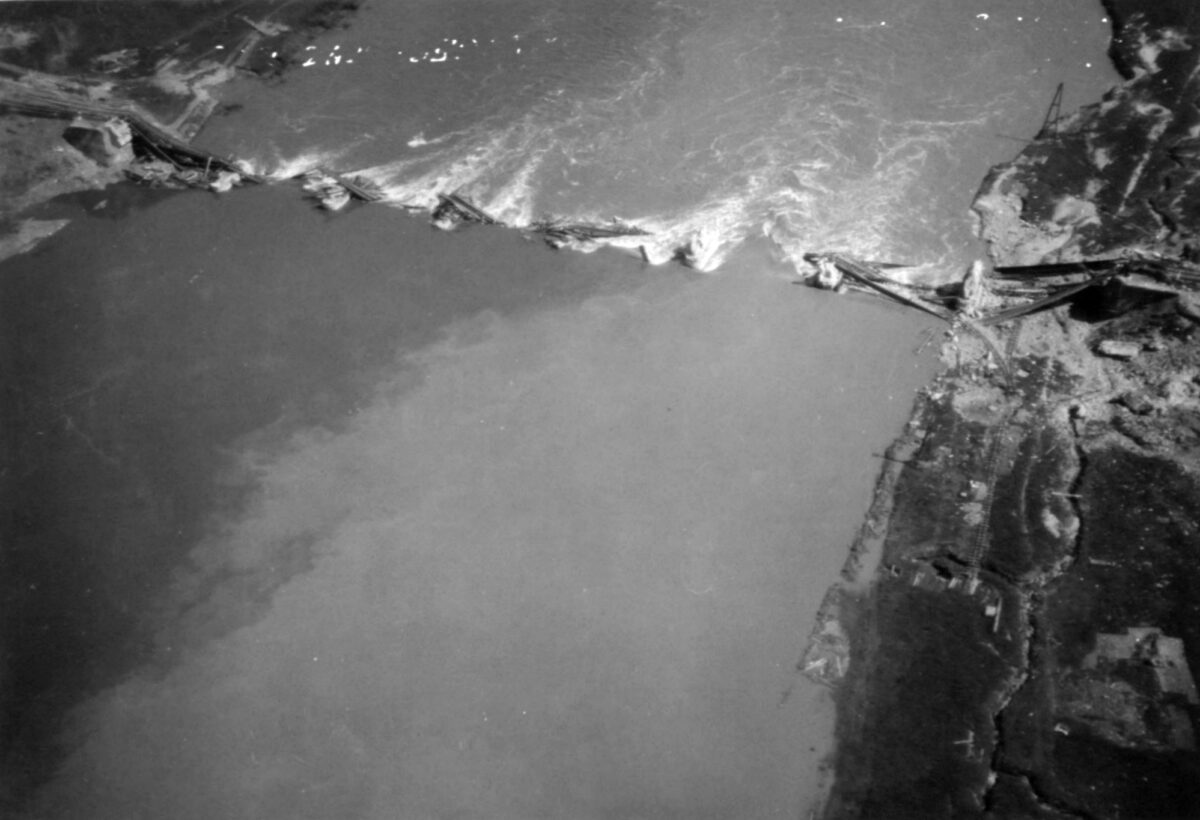
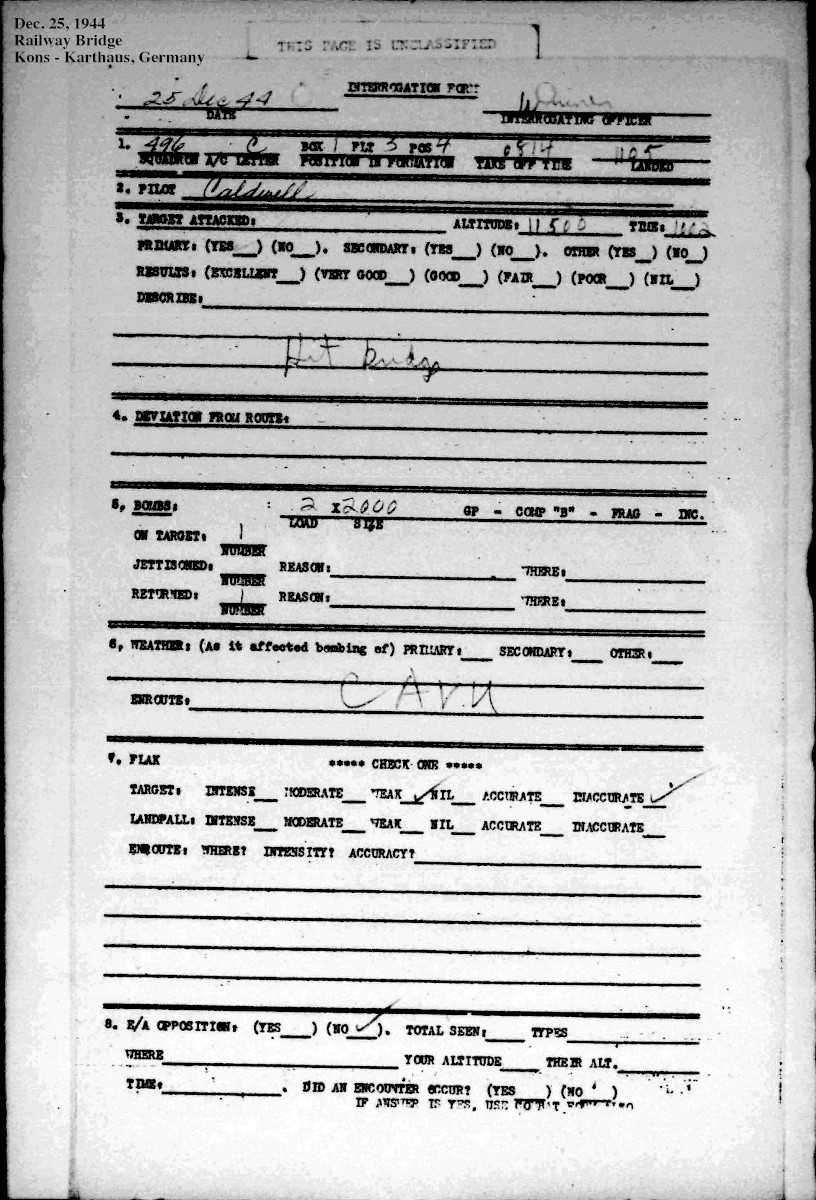
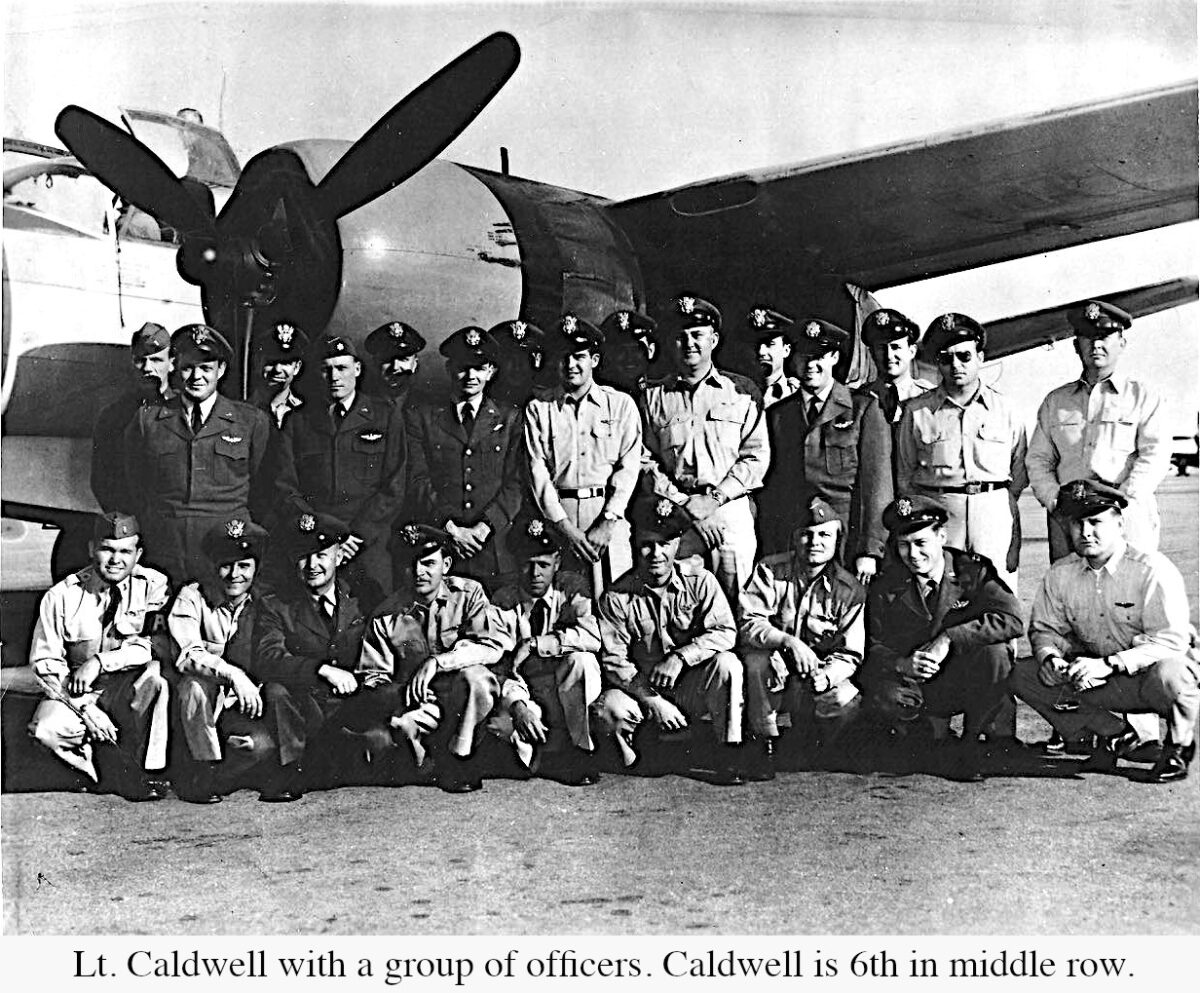
The final mission of WWII for Captain Caldwell.
